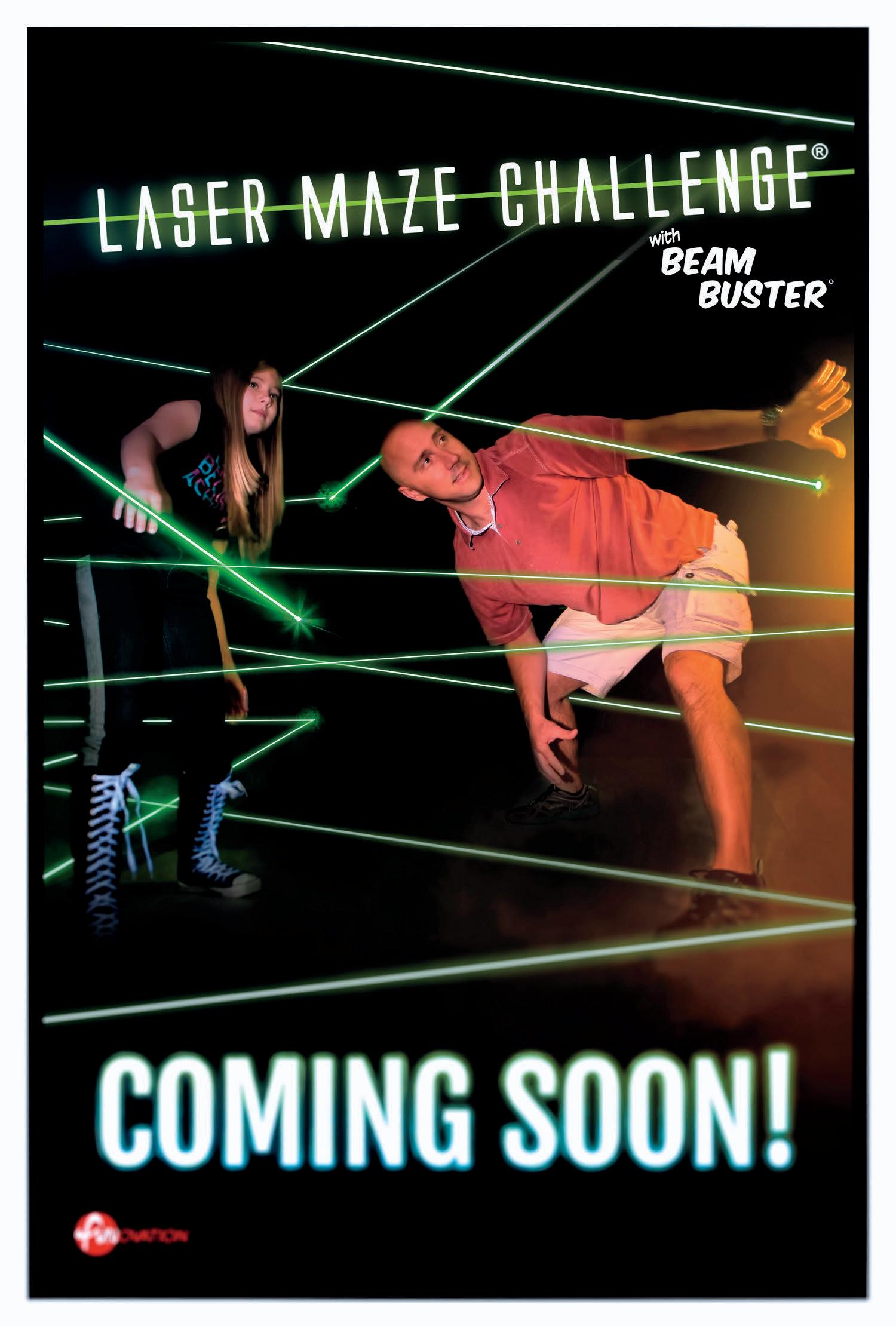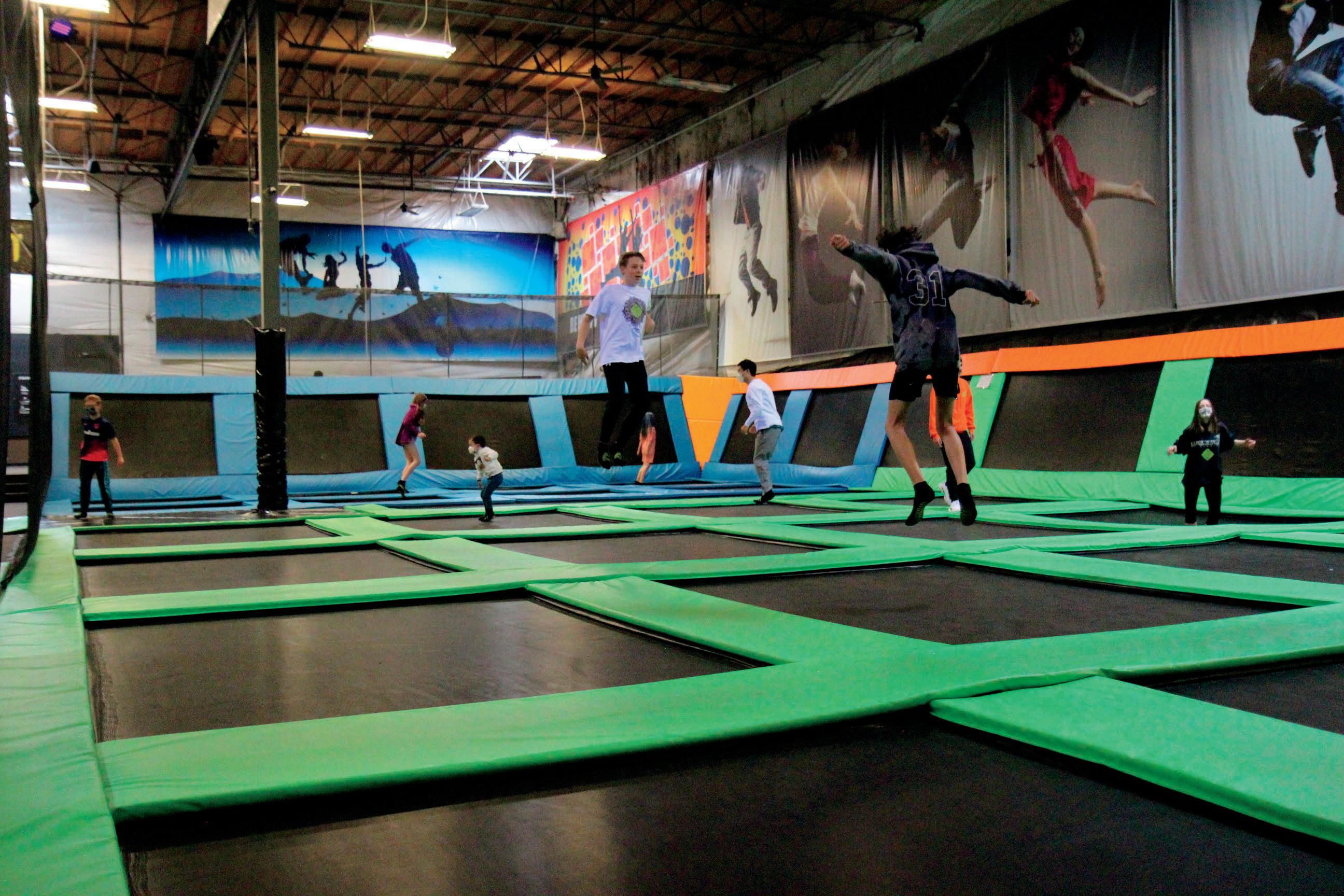































































A portion of the proceeds from each birth certificate benefits the Children’s Trust Fund of Washington, administered by the Washington State Department of Children, Youth & Families Strengthening Families Program.

• This official birth certificate is personally signed by the Governor and State Registrar.
• Certificate is 8 1/2 x 11 and includes the name, date and place of birth, as well as the name and birthplace of the parent(s).


• Frameable keepsake.
• For each $45 purchase of an Heirloom Birth Certificate, $20 is tax deductible.
To find out more information on Children’s Trust and child abuse prevention in Washington State visit: www.dcyf.wa.gov/about/governmentcommunity/community-engagement or visit the Department of Health to order your own Heirloom Birth Certificate.
DCYF FS_0010 (09-19)
May/June 2023 // Issue 499

“Seattle is my town. I know this city inside and out… or so I thought until I had kids.”
Seattle’s Child is your guide to getting to know your city all over again. Finding things to do, places to eat, and how to get around — it’s a whole new ballgame with kids in tow. We’re interested in how parents make homes in a space-challenged urban environment, how families create community, and what parents are really talking about.
Seattle’s Child reflects real Washington families and their broad range of parenting experiences.
ANN BERGMAN Publisher, Founder abergman@seattleschild.com
JASMIN THANKACHEN Associate Publisher jasmin@seattleschild.com
KATHRYN HOLLOWAY Art Director

CHERYL MURFIN Managing Editor cheryl@seattleschild.com
JULIE HANSON
Website Editor jhanson@seattleschild.com




JOSHUA HUSTON
Photographer ROSE WILLIAMSON
Proofreader
JEFF LEE, MD Columnist
DR. SUSANNA BLOCK

AIDAN BOND LAUREN BRADEN CHARLENE DY CLAIRE SHERIDAN KAREN SUMMERVILLE ROSE WILLIAMSON
Contributors






ADVERTISING
JULANN HILL Senior Account Manager julann@seattleschild.com 206-724-2453
ERICA GILSON Account Executive erica@seattleschild.com

AMBER ELBON Ad Production Manager amber@seattleschild.com
Seattle’sChild

Seattle’s Child has provided useful information to parents since 1979. In addition to our magazine, look for our special themed publications —
Everything Family, School and SummerTime — distributed free throughout the Puget Sound area. Seattle’s Child is published every other month. ONLINE seattleschild.com
Facebook facebook.com/seattleschild
Twitter @SeaChildMag Instagram @seattleschildmag
MAIL c/o Postal Plus 1211 E. Denny Way, Seattle, WA 98112 VOICE 206-441-0191
TO ADVERTISE advertise@seattleschild.com
MAGAZINE DISTRIBUTION distribution@seattleschild.com
STORY IDEAS editor@seattleschild.com
CALENDAR SUBMISSIONS calendar@seattleschild.com
Deadline is first of the month, one month prior to publication. Include date, time, cost, appropriate ages, address, contact information and description.
I am 24 years old, a hard worker, and an instant friend to most people I meet. I love music, art, food, cars, Pitbulls, and nature. I’m tall with long hair, a wellkept beard, and a wardrobe full of black band T-shirts and skinny jeans plus two silver rings – one a very cool dragon. I am also on the autism spectrum. I’m a young adult with Asperger’s trying to make
by JOSHUA HUSTONit in a world that is sometimes less than welcoming to neurodivergent individuals. I am doing pretty well.
Without question, I owe much of the success I’ve had in overcoming many of autism’s challenges to the special education teachers and paraeducators who guided me all through school — never once giving up on me. That’s why we should not give
up on them by paying them less than they deserve or increasing the number of kids in their classrooms. Currently, paraeducators (paras) in Seattle earn $19 an hour, just $4 above minimum wage and $3 less than I make driving a delivery truck. That seems crazy to me and it should to you, too.
Limiting class size allows teachers and their aides to give kids with disabilities the one-on-one attention they need. I fear that enlarging special education classrooms will subject kids to a kind of chaos that will not only scare them, but will make it difficult to

all the differencephotograph The author, Aidan Bond, reconnects with his former teacher, Angela Burke.
PEPS offers peer-support programs for expectant parents, parents of newborns, infants, or adolescents and teens, plus affinity groups. Families can connect on weekdays and weeknights in virtual, in-person, and hybrid groups.





CONTINUED
learn and grow. Both of these issues – pay and class size – were central concerns in the recent 2023 Legislative session and the Seattle teachers’ strike last September.


I used to be ashamed of my autism. Today, however, I am proud of who I am and of being part of a group of people who are thriving despite a way of thinking and being that sets us apart. Looking back, I believe the compassion, patience, dedication, and skill of the teachers, specialists, and paras in my self-contained special needs classrooms – and available to me in different ways as I transitioned to mainstream classes in middle and high school – were critical to my transition from low- to high-functioning autism.

The trajectory of my education and my life changed with one very special teacher: Angela Burke. After a particularly hard year with a less experienced teacher, Mrs. Burke saw my strengths and my potential. She advocated for moving me into mainstream classes, with support. I started to shine. I believe this is the most important thing we pay special education teachers and paraeducators to do: to see potential in students with disabilities and help them expand beyond what they see in themselves. I am grateful to Mrs. Burke for treating my autism as a single factor in who I am, not the whole, and not a burden.
Special education teachers and paras change lives. They should be valued, well-paid, and work with class sizes that allow kids to make progress. If teachers near me strike again this fall or in years to come, I will walk with them. Because they walk for me.
I recently caught up with Mrs. Burke, a 25-year special education veteran, now
in the Edmonds School District. Here’s a bit of our conversation:
Me: Should special education students be integrated into mainstream classrooms?
Ms. Burke: I think that is kind of the million-dollar question. It’s important to recognize the spectrum of what kids need. I have worked in a self-contained environment and I know that it’s a really critical service area that we still need. Some kids need the time and the space to be met where they are and have a safe environment created where they can learn and grow at their own pace, and then be pushed when they’re ready. I also recognize there’s a movement to do a lot of in-class inclusion. For some kids that works. But for some kids, I feel like it falls short.
Me: How have paras helped you and should they receive better pay?
Ms. Burke: I definitely think they should. I couldn’t do my job without them. I can’t be everywhere and be everything to everyone. They inform our practices, see what’s working, how kids are growing, and what we might need to switch our focus to. They’re critical.
Me: Is keeping class sizes small important?
Ms. Burke: Yes, small and manageable. To give kids with special needs what they need to succeed in a mainstream class, sometimes it takes a smaller class size. Sometimes that means a class of their own, with some targeted mainstreaming. You’re spreading teachers thinner and thinner whenever you add any kids to a general education class. If you add four or six special-ed kids to that class, it does make a big impact. It is a big deal.
A friend of mine once told me about an epiphany she had at 60 mph on I-97. She didn’t want to hate on Raffi. Really, she didn’t. He seemed like a lovely person. He sang cheerful, singable songs about teddy bear hugs. He was an anti-war activist. He had a loyal fan base all over the world who had bought more than 15 million of his records. She tried so hard not to despise him, but in the end, she just couldn’t take it.
They were driving to a cabin to go cross-country skiing in Winthrop. Five hours in a snowstorm, over icy mountain passes, with only one CD in the car, and a cranky toddler in the back seat. And as soon as the song stopped, the screaming would begin.

“I want Baby Beluga! I want Baby Beluga! Baby Beluga! Baby Beluga! BABY BELUUUUUUUGAAAAAAA!!!!”
Time and again, she found herself giving in. She pressed the repeat button, and the song would come on, and another clump of cells in her cerebral cortex would shrivel up into a tiny, coagulated, beluga-shaped scab.
Finally, somewhere on the interstate a few miles outside of Chelan, she came to terms with the inescapable truth: you can’t negotiate with terrorists. She yanked the CD out of the car stereo, opened the window and sent it flying like a tiny UFO out into the blinding snow. For all she knows, it’s still out there, like a cursed monkey paw, lying in wait to terrorize the next unsuspecting parent who picks it up, pops it into their stereo and presses “play.”
Another friend of mine once showed me his favorite chapter in his favorite parenting book. The entire chapter read as follows:
Why, indeed? When I was a kid, most of my early music exposure came from my brother, Todd. He was three years older than I, and hung out with kids who had their own stereos. He used to save up his allowance and babysitting money to buy records – 45 rpm singles at first, and then whole albums. When he wasn’t around, I’d play them (he would have killed me
if he’d caught me) and they planted the seeds that would form my musical tastes for the rest of my life.
He started with the Beatles and the Monkeys. Then it was James Taylor, Joni Mitchell and Carole King. In high school, he discovered Marvin Gaye and Earth, Wind and Fire, and by the time he graduated, it was Keith Jarret and John Coltrane. I still listen to all of those artists today, on Spotify instead of a scratchy album or 45, and I expect I’ll do so for the rest of my life.

My partner Jess has a similar story with classical music. She grew up in a house full of Chopin nocturnes and Schubert impromptus. The music of her childhood plays in our house every day, trading off with the soundtrack of mine.
Which makes me wonder, what foundation are we laying for our children’s musical taste? What are the chances they’ll be rocking out to Baby Beluga four or five decades from now?
I shouldn’t badmouth all kids’ music. There are a few performers who bring something that actually resembles musicianship to the scene. Check out Recess Monkey, a band of three Seattle teachers who manage to entertain both kids and adults without insulting either. Sadly, though, they’re the exception that proves the rule.
I don’t think you need to fling all your Raffi CD’s out the car window (unless, of course, that’s your thing). I just think we should introduce our kids, right from the beginning, to music we really love. And that same principle applies to more than music. Just because they like McDonald’s, can’t they develop a taste for great gumbo, too? Even though they love video games, does that mean they won’t love kick-thecan? Our job is to do more than give them the stuff that the childhood industrial complex is marketing to their demographic. Our job is to introduce them to the wonderful things in the world.
Say yes to Bob Marley. Say yes to The Talking Heads. Say yes to the Goldberg Variations.
Just say no to Baby Shark.
ABOUT OUR COLUMNIST
Jeff Lee dances in his living room to Parliament-Funkadelic, when no one’s looking, in Seattle, WA.






















































 Illustrations © Jenna Riggs • jennariggs.com
Illustrations © Jenna Riggs • jennariggs.com
Illustrations © Jenna Riggs • jennariggs.com



 Illustrations © Jenna Riggs • jennariggs.com
Illustrations © Jenna Riggs • jennariggs.com
BaysideABA.com
office@baysideautism.com
3308 E Spring Street, Seattle, WA 98122 • 206-825-0251
Through the use of Applied Behavior Analysis (ABA) Bayside ABA offers individualized treatment options to elevate the lives of our clients in a fun and supportive environment. Bayside ABA understands that every family is unique and deserves a well-rounded approach to teaching fundamental skills that will increase independence and fulfillment in the lives of the children we work with. Tucked into the Madrona neighborhood, Bayside ABA is community oriented and easily accessible to the greater Seattle area.








bcacademy.com


admissions@bcacademy.com
14640 NE 24th St., Bellevue, WA 98007 • 425-649-0791
Apply now for BCA® Preschool and Pre-Kindergarten!


Bellevue Children’s Academy® Preschool-4th grade offers innovative inquiry-based learning that fosters the development of the whole child. BCA® Preschool and Pre-Kindergarten programs balance fun exploratory learning with strong foundational academics where young learners will discover the world through a lens of problem-solving. Small class sizes and hands-on activities incorporated with inquiry-based instruction nurture a love of learning. We foster compassion and innovation to empower future global leaders.
smokeywoodfarm.com
smokeywoodfarm@gmail.com
18808 NE 106th Street, Redmond, WA 98052
Smokey Wood is a 20 acre equestrian farm and orchard conveniently located in the heart of Redmond, WA - just 25 minutes from Seattle and most other areas of Western Washington.
Smokey Wood offers beginner riding lessons, summer camps, and horse boarding & training, and serves as a beautiful space for weddings and other events. For more photos, rates, availability and other information, please visit our website or email us at smokeywoodfarm@gmail.com

For an other-worldy yet deeply grounding experience in natural sound, music, and light, put the artist Jónsi’s FLÓÐ exhibit at the National Nordic Heritage Museum on your must-do list. Simple, ethereal, and amazingly calming, this immersive experience is one that even young kids can sink into as they settle along the walls and floor of the exhibit. Bring a cushion and blankie and stay awhile to enjoy the full spectrum of sounds, song, and illumination. Warning: Darkened room and some loud sounds. Exhibit included in ticket price: $20 per adult, $10 per youth 5-18, $5 per Teen Tix holders, free for kids 4 and younger. 3nordicmuseum.org —Cheryl
 Murfin
Murfin
A world of wonderful hiking awaits
by LAUREN BRADENCascadia is a land of contrasts, none more stark than when you venture from the misty emerald forests of Western Washington to the state’s arid eastern half. In spring the vast Columbia Plateau is warmer, drier, and, unlike most trails in the Cascades and Olympics, not under several inches of snow. Colorful in places and austere in others, this landscape of basalt canyons, dry coulees, and sagebrush is crisscrossed
with lightly trod trails that provide relief for spring fever in the form of warmth and sunshine.
If you hear “desert” and think barren, you’re in for a nice surprise — our shrub-steppe habitat is full of life, though many plant and wildlife species here face threats of habitat fragmentation and degradation. About half the fragile shrub-steppe ecosystem that once carpeted Eastern Washington is gone. On that which remains you may encounter elk, bighorn
sheep, coyotes, sagebrush lizards, jackrabbits, rattlesnakes, and an array of migratory songbirds and raptors. Some birds are strongly associated with sagebrush and you’ll only find them in sage habitat, like sage-grouse (who only lay their eggs under sagebrush), Sagebrush Sparrow, Brewer’s Sparrow, and Sage Thrasher. Wildflowers put on a vibrant show each spring. Look for desert specialties like the bright fuchsia blossoms atop spiky hedgehog cactus, arrowleaf balsamroot, sagebrush violets, clumps of phlox, and bluebells.
LYNDON
Visit with cows, chickens, goats, and pigs before strolling the gardens to pick seasonal produce for dinner. Grill up meats from the local farm store and pick fresh raspberries for a treat.
2
CAMANO ISLAND
5 things to do 5 fabulous farm stays 3
With sweeping pastures, wooded forests, hiking trails, and awesome views, you’ll never want to leave this 100-acre Alpaca Farm Retreat on Camano Island. Did we mention that you get to feed the alpacas!
EASTSOUND
Eco- and vegan-friendly Pebble Cove Farm is within an animal sanctuary, overlooking a quiet cove. Visit with rescued animals, paddle to a tiny island to picnic, and enjoy a timeless Orcas Island farm experience.
Lavendar
SEQUIM
Not your typical farm, Purple Haze is a working lavender farm. Walk the lavender fields, pick flowers, gather herbs for your meal, or visit with the ducks and chickens. Hint: the lavenders bloom from June to July.
1 4 5
Tea House and Farm Stay
SEDRO-WOOLLEY
If you love high tea, this farm is for you. Enjoy morning tea and scones, wander the rustic gardens, and help impoverished women by planting chamomile.
Older kids? Consider a bike tour.
—Jasmin Thankachen

The best desert hiking trails in Washington are concentrated around Ellensburg and Yakima within state wildlife recreation areas, with a few other superb hikes scattered throughout the Columbia Plateau. Go in late April, May, or early June for the brilliant but brief display of wildflowers and the most active migratory birdlife.
L. T. Murray State Wildlife
Recreation Area
Umtanum Canyon, SR 821, 13 miles south of Ellensburg
3wdfw.wa.gov
360/902-2515
Parking fee
Step into a riparian oasis in the heart of Washington’s dry sagebrush steppe country. The trail begins at the Yakima River and gently meanders up the lush basalt canyon alongside Umtanum Creek, crossing over it and back again in a few places.
Spring hikers are serenaded by a chorus of migratory birdsong, including bluebirds, orioles, and many species of warblers. Lewis’s Woodpeckers nest here, their flapping crowlike flight notably different from the undulating flight of other woodpeckers. Bighorn sheep and deer roam the sloped canyon walls, and a Prairie Falcon pair often nests here. Watch for the sight or sound of a rattlesnake; hiking with a walking stick reduces the chances of surprising one. Desert wildflowers color the canyon bottom, and sapphire-blue sky stretches for miles overhead. The trail becomes overgrown at three miles, a good place to turn around. There are nice, flat campsites every mile or so along the trail.
Columbia Basin Wildlife Area
Ancient Lakes, Ancient Lake Road, Quincy
3wdfw.wa.gov
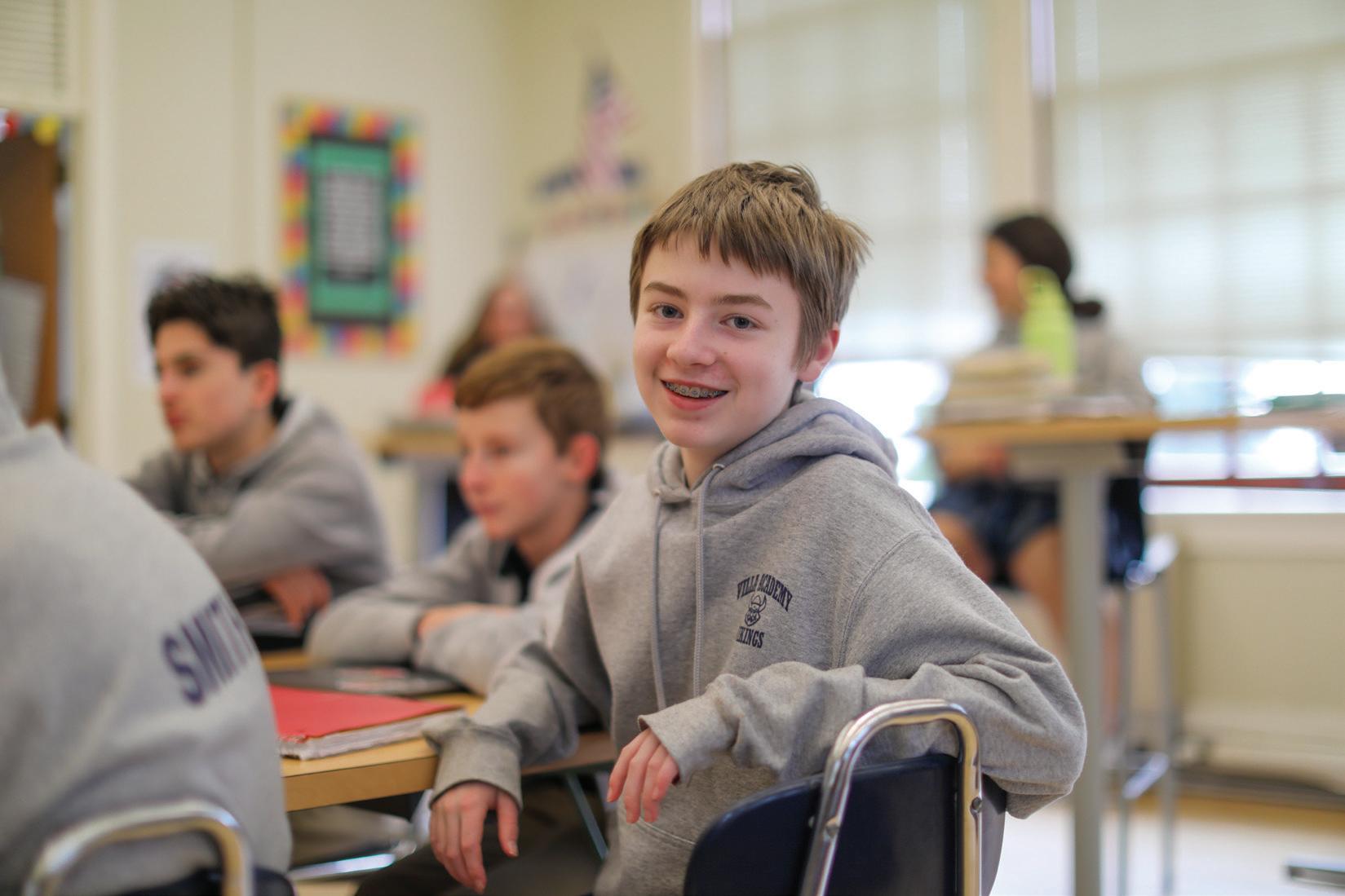
509/765-6641
Discover Pass
Welcome to the channeled scablands, where ancient lava flows met with Ice Age flooding, leaving behind the mighty Columbia River and a patchwork of soaring basalt benches, isolated mesas, and wide coulees across a vast portion
of Eastern Washington. Venture into Potholes Coulee on an old jeep track to a trio of aptly named Ancient Lakes flanked by towering basalt (4.4 miles round-trip). The route to the lakes is easy and fairly flat. Once at the lakes, optional scrambles over talus to reach sweeping views are more challenging and require good hiking boots. A plunging waterfall pours from the coulee’s rim into one of the lakes, splashing onto columnar basalt steps in its descent.
Tall sagebrush, rabbitbrush, and bunchgrass carpet the flat of the coulee. Plentiful wildflowers greet hikers in May, including yellow bells, hedgehog cactus, yarrow, balsamroot, and yellow paintbrush. Western Meadowlarks and Red-winged Blackbirds provide a continuous soundtrack for your rest stop by the lakes. Small game birds like Chukar and quail scurry across the trail. Rattlesnakes are common ground-dwellers here, so look before you step.
As you traverse along the base of the cliffs, look up and you’ll see hungry Violet-green Swallows and White-throated Swifts darting around for juicy bugs. They probably won’t get to all the mosquitoes, so pack bug dope on this trail. Bring in all your drinking water, as the lake contains irrigation runoff and isn’t safe to drink, even when filtered. Overnight campers will find lovely spots to pitch a tent on grassy patches near the lakes, some with shade. Enjoy sleeping under a giant sky full of stars that only the desert provides as you’re lulled to sleep by a chorus of frogs and coyotes.
Steamboat Rock State Park
Northrup Canyon, 51052 Highway 15, Electric City 3parks.state.wa.us

509/633-1304
Discover Pass
Walk and gawk through this steep-walled valley of eroded basalt cliffs among aromatic sagebrush, shady aspen, and willow trees to an old ranch homestead (3 miles roundtrip). The Northrup family settled in this remote canyon in 1874, constructing an irrigation system and planting the area’s very first orchard. Ruins of the homestead’s cabins, barns, and even a chicken coop remain on-site. Turn around at the homestead for an easy outing, or continue on for a slightly more challenging outing as the trail climbs steeply up to Northrup Lake, a nice pond to bait a trout (6 miles round-trip).
Keen observers will note signs of the ecological transition zone this trail traverses, where sagebrush steppe mingles with open ponderosa pine and fir forest. The end result is a scenic landscape, especially when the meadow is in spring bloom of balsamroot and lupine, and low sunlight washes the cliffsides with color. Early morning hikers may be rewarded with the downward spiral tune of the Canyon Wren and spot the several species of owls or woodpeckers who call the canyon home. Quail, Ring-necked Pheasant, and Wild Turkeys may also be seen. Leash your dogs and bring hiking poles or a stick to tap as you go in case a rattlesnake is lurking in the grass beside the trail.
Hike safely in desert country
3Pack your own water. In an arid climate you’ll want 2 liters per person for a half-day hike, more for a full day.
3Expect no shade. Apply strong sunblock and wear clothing that can protect against harsh sun and wind, including sunglasses and a widebrimmed hat.
3This is tick country. Wear light-colored clothing so you can spot ticks on yourself and your hiking partners. Check yourself and your dogs as soon as you return to the trailhead, before you get into the car. Feel around your scalp for bumps. Change into clean clothes, stuffing the hiking clothes into a garbage bag. When you get home, put the clothes into the dryer and run it on high for ten minutes — it kills the ticks.
3Watch for snakes. Rattlesnakes may be on or just beside the trail. Carry a hiking stick to avoid surprising one — move brush or thump a rock before you step. Keep dogs leashed.
3Observe, don’t disturb. Observe elk or bighorn sheep from a distance, taking care not to disturb them. Do not dig up cacti and other desert plants to take home.
Lauren Braden is an outdoors and travel writer in Seattle, and founded the local trip-planning website
3nwtripfinder.com. This article was excerpted from 52 Ways to Nature: Washington: Your Seasonal Guide to a Wilder Year by Lauren Braden (2022), with permission from publisher Mountaineers Books.

Throughout Seattle, tucked between buildings or in fields or beside community centers, there are more than 90 neighborhood P-Patches, garden plots that not only feed the families who tend them, but area food banks as well. This year the city program celebrates its 50th anniversary. How do you get a P-Patch plot? It’s easy, although patience is the name of the game. Here’s what to do: Step 1: Learn. Become familiar with the program and P-Patch Interest List 3seattle.gov/neighborhoods/p-patch-gardening. P-Patches are available to Seattle residents only. Step 2: Pick out two gardens you’d like to join from the website’s P-Patch Map. Step 3: Sign Up. Either register on the P-Patch interest list online or call (206) 684-0264 to added to the list. Step 4: Wait for an opening. Don’t expect it to happen in the same year you apply. It can happen, but it’s rare. —Seattle’s Child staff
For kids moving toward or through adolescence, music can feel as essential as breath. Bundle it with a tasty breakfast and, well, what else does one need?
Which is why Easy Street Records & Cafe in the heart of West Seattle is a tween-or-teen’s dream spot — and one for parents, too.

gatherings encourage healthy eating and community
by CLAIRE SHERIDAN / photographs by JOSHUA HUSTONFamily mealtime could be a key ingredient for raising healthier kids.
Tilth Alliance’s Community Kitchen events not only promote family togetherness, but gathering with friends and neighbors as well, all
in the spirit of healthy food education, community building, and celebrating cuisines from Puget Sound’s diverse cultures.
Each month, Community Kitchen meals are held at Rainier Beach Urban Farm & Wetlands.

Local residents join the Tilth staff and a professional guest chef in the facility’s kitchen and together they create a delicious meal using fresh, seasonal food — much of it grown on-site at the farm.

For the past year, Marcus Henderson and his partner Stephanie, operators of Black Star Farmers, have brought their toddler to Community Kitchen
On one side of this bustling upstairsdownstairs corner shop, bays and bays of vinyl records and CDs, music posters, saint musician votive candles and more await perusal. On the cafe side, you’ll find an expansive menu of delicious breakfast dishes, with fitting music-oriented names: the “James Browns” hash browns are crispy and loaded, the Blueberry Hill Hotcakes really rock and you and your kids may just write your own rap about the Notorious B&G biscuits and gravy.
—Seattle’s Child staff
events.
“We’ve had a wonderful time introducing our baby to lovingly cooked cuisines from all over the world,” said Stephanie. “Most memorable [to mama] was the Korean chef in July, who brought shaved ice with the best toppings. This hit so close to home for me as a Chinese person who loves (bào bīng) — and was perfect in the sweltering heat of summer.”
Community Kitchens often include family activities and performances and menus center around a theme. While all events are educational, sustainable, and nutritious, they’re also meant to be celebratory. Lunar New Year, Soul Food, Ramadan, and Pride-themed “Taste the Rainbow” dinners have all been served at the farm. Foods from diverse cultures feature prominently. It’s all part of the
organization’s effort to educate individuals and families about seasonal eating, food sustainability, food equity, and nutrition.

The benefits of participating in shared food experiences go beyond a full belly – they support physical and mental well-being, too. According to research conducted by the National Center on Addiction and Substance Abuse, chil-

dren who ate with their families most frequently were less likely to drink alcohol, smoke cigarettes, or use marijuana. And as the renowned Massachusetts General Hospital Family Dinner Project and Seattle Children’s Hospital point out: Family meals offer a natural way to practice life skills like responsibility and teamwork.
According to Tilth Com-



Space fills quickly, so sign your family up early to attend Tilth’s FREE Community Kitchen events or to volunteer for an event at 3tilthalliance.org/get-involved/ attend-an-event.
Beyond Community Kitchen meals, families are welcome to visit the 10-acre farm and wetlands. Pick produce from the free designated U-Pick areas, or purchase produce from the pay-what-youcan farmstand year-round. More at 3tilthalliance.org.
munity Education Director Chris Hoffer, Community Kitchen meals offer families a chance to slow down, learn, and work together in the kitchen. And it allows them to get away from damaging eating trends for at least one meal a month.
“Unfortunately, we live in a larger society that is dominated by fast, cheap, and highly processed food that exploits the earth, the people growing the food, and the people consuming the food,” Hoffer says. “This has led to an epidemic of chronic disease and disconnect from nourishing food cultures.”
Hoffer recognizes finding opportunities to move into the kitchen together can be challenging for families.
“There really aren’t that many opportunities these days for folks to cook and eat together, so Community Kitchen meals are unique in providing those spaces,” Hoffer says. “Whether for the cooks or the people enjoying the meals, it creates a space to share food stories and traditions and build community through intergenerational learning.”
Community Kitchen relies on Tilth Alliance’s farm-to-table and market programs, which have extensive networks with local farmers. The organization is committed to using foods grown in ways that are respectful of the earth, farmers, and farmworkers. Whenever possible, they use what’s growing seasonally at Rainier Beach Urban Farm and augment with ingredients grown by local BIPOC farmers.
Rainier Beach Urban Farm & Wetlands is owned by Seattle Parks and Recreation and open to the public. The 10-acre organic farm and wetlands are managed by Tilth Alliance in collaboration with Friends of Rainier Beach. In addition to monthly Community Kitchens, families can visit the farm to pick produce from the free designated U-Pick areas, or purchase produce from the pay-what-you-can farmstand year-round. Learn more at: 3tilthalliance.org.
Callie Christensen and Kelly Oriard, the founders of Vancouver, Washingtonbased Slumberkins, are having a good year. Just a few months ago, Apple TV+ launched the Slumberkins television show, featuring the company’s furry creatures and developed in partnership with The Jim Henson Co. And this month they were included on Inc.’s Female Founders 200 list, a group honored for “challenging the status quo and tackling some of the world’s biggest problems.” Through cuddly character stuffies, storybooks and affirmations, Slumberkins helps parents and kids talk about and normalize feelings and emotions.
3slumberkins.com —Seattle’s Child staff
There are baby books and there is “My Baby’s Book,” and the two are not the same. Seattle author, yoga pioneer, and mom, Anne Phyfe Palmer has created a beautiful and compelling journaling tryptic with the release of the latter earlier this year.

Lynn Hughes knows all about birth. She’s had her own babies, so she has that personal experience to call on. And, as a licensed midwife of more than 30 years, she’s delivered her fair share of babies in the Seattle area, assisted many other midwives in home and birth cen-
ter deliveries, helped train dozens of student midwives and provided doula care to parents giving birth in hospital settings.
Hughes also knows a lot about photography. In fact, Hughes, who is 68, says she received her first black-and-white film camera when she was 9 years old and
hasn’t put it down since.
“I’ve always loved taking photos and documenting everything,” she says.
Last year, Hughes hung up her stethoscope at Rainy City Midwifery, one of the city’s longest running midwifery practices, to open one of the region’s newest pregnancy, birth, and family photography businesses: Lynn Hughes Photography.

While several birth and baby
CONTINUED ON NEXT PAGE >
Keepsake-oriented, “My Baby’s Book” is the third journal created by Phyfe Palmer and published by Seattle-based Sasquatch books. It joins “This Life of Mine” published in 2019 and “This Family of Ours” in 2021 in providing ample space and prompts to explore one’s own life, the life of one’s family and a child’s first few years of life.


By the time parents have completed this baby history, they’ll have a clear recollection of baby milestones and early parenthood memories. Like Phyfe Palmer’s other journals, 144-page “My Baby’s Book” includes Sarah Trumbauer’s intricate papercut art. A great stand-alone shower gift or all three make the fuller family story. $19.95$22.95 per book at 3sasquatchbooks. com or other booksellers.
—Cheryl Murfinphotographers in the region have become doulas and vice versa, Hughes may be the first licensed professional midwife in the area to fully make the switch. What new angle does a midwife of so many years bring to the work of birth photography?
Experience looking at birth from literally every angle.

“I’ve seen the myriad ways that labor and birth can unfold,” Hughes says. “With this much experience, I don’t need to think much about what to photograph – it just comes naturally. And the way I ‘see’ labor and birth, I think, is a little different because of how intimately I’ve been involved up close in the process. I’m very comfortable with the intense emotions and strong sensations that are experienced and vocalized, so families feel a sense of calm from me.”
Equally important, she says:
“I have a wealth of experience with the normal birth process as well as deviations from normal, so I know when it’s appropriate to step back if there are complications and how to still close the loop on the story if all doesn’t go as planned.”
For Hughes, birth and postpartum photography is storytelling at its finest. Each birth is the tale of a parent or a couple, their relationship and the beginning of multiple new relationships with the new baby that has arrived.
“My best birth storytelling captures myriad emotions: love, joy, excitement, emotional intimacy, fear, challenge, exhaustion, strength, connection, surprise and relief,” Hughes explains. “These things are precious lines in a family’s unique story. I know what I am looking for, but I’m also always ready for the surprises.”
She also holds space for the emotional and spiritual process of birth as she documents the physical process: “It is transformative for everyone
involved. I experience the welcoming of a new life as a sacred event deserving of respect, reverence and celebration. Not only do the images celebrate the birth day, but they have the potential to be empowering and healing during the emotional processing of the birth journey. For some they may even help heal past trauma.”
Hughes doesn’t hide her midwifery background from her photography clients.

“I am very careful about what I say – and make it clear that I’m not their care provider,” she says. But for a limited number of clients who do want more of her birth knowledge along with great pictures, she offers a doula care and photography package. She also offers shorter, less costly photo sessions and is open to payment plans and even bartering.
“Not only do the images celebrate the birth day, but they have the potential to be empowering and healing during the emotional processing of the birth journey. For some they may even help heal past trauma.”
“I truly wish professional birth photography was accessible to all families who would like it,” she says.
For the most part, Hughes says she wants her main role to remain behind the lens.
“My aim as a photographer is always to blend into the background –to be the proverbial fly on the wall” she says. But there will be times when she joins in the chorus of voices chanting “That’s the way! You’re doing it! You’re so strong!”
“Once a midwife, always a midwife,” Hughes laughs.
Go to 3seattleschild.com to see a collection of photos by Lynn Hughes.
—LYNN HUGHESLynn Hughes
GIVE YOUR KIDS AN AMAZING SUMMER WITH A CAMP OR CLASS EXPERIENCE
Camp Killoqua
Grades K-12

15207 East Lake Goodwin Road, Stanwood 98292 360-652-6250
killoqua@campfiresnoco.org campkilloqua.org
Camp magic comes from meeting new people, trying exciting activities, using your imagination, and having fun. Our programs focus on appreciation of nature, democratic group living, non-competitive sports and games, skill development, concern for others, fun and friendship.
Camp Woodrich
Ages 3-18
Serves the Puget Sound region 865-803-8072
ali@campwoodrich.com campwoodrich.com
Camp Woodrich exists to bring joy, adventure, and rest to families with children with special needs—at no cost to the parents. Summer camp is life-changing and character-building and we desire all families to share in the experience. We serve the Puget Sound region and offer free events throughout the year.
Camp Ozobot
Ages 9-13
Seattle University
800-433-6060
academics@ussportscamps.com
ussportscamps.com/academics/camp-ozobot/ coding-through-robotics-seattle-university
Camp Ozobot is a one-of-a-kind coding summer camp that incorporates STEM

principles using our award-winning robot. Taught by credentialed educators, students will enhance their skill set, collaborate and play with peers, express creativity, and further their computer science knowledge.
Champions Champ Camp
Ages 5-12

18115 Campus Way N.E., Bothell 98011 800–246–2154 or 425-215-3857 BothellSummer@discoverchampions.com discoverchampions.com/landing-pages/ bothell-summer-break
Join us for a new adventure camp at the University of Washington Bothell for a summer they’ll never forget! Days are filled with outside awesomeness– field trips, hiking, swimming, sports, gardening, greenhouse and wetlands activities, beekeeping, and more. Tuition includes breakfast, lunch, and snacks.
Creative Dance Center
Summer Camps and Classes
All ages
12577 Densmore Ave. N, Seattle 98133 206-363-7281 info@creativedance.org creativedance.org
Summer at CDC includes classes for all ages and multi-arts dance camps. Classes include Nurturing Baby, Family Dance, Caregiver-Child, Creative Dance, Hip Hop, Ballet, and Modern. Summer Camps for ages 4-13 include Ballet Stories, Musical Theatre (Matilda and Finding Nemo, Jr.), Stories in Motion, Lyrical Dance, and Art in Motion. Our Teen Intensive, for ages 13 and older, provides an opportunity for creative growth.
Foundations Grades 2-8 Middle


Grades 6-9
206.709.9500
901 Lenora St, Seattle

www.morningsideacademy.org
Planning & Intervention
Ages 6-18
Various locations
425-658-3016
summer@connections-behavior.com connections-behavior.com
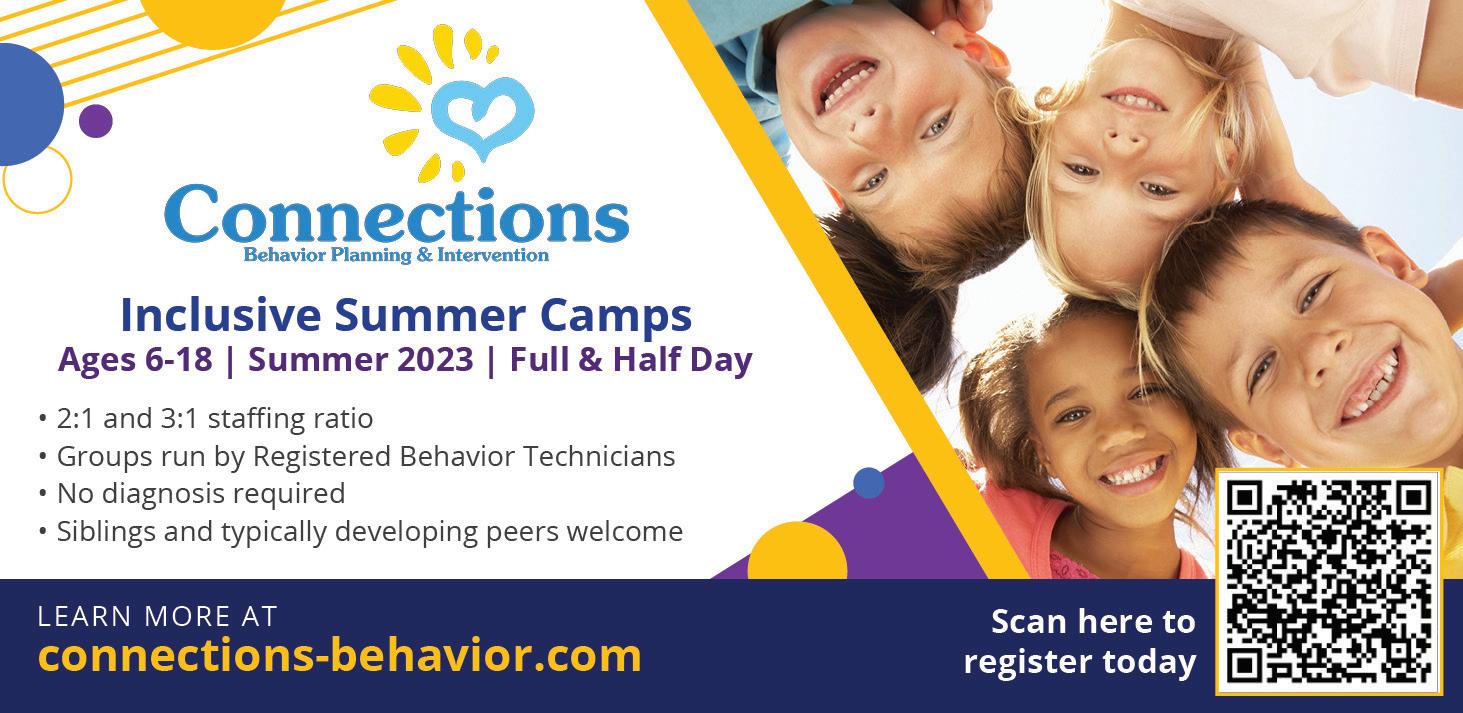
Come and spend the summer with us! We are offering full and half-day inclusive summer camp options, beginning in June. Camps include fun activities and themes such as sports, engineering/building, nature, science experiments, board games, and more! Groups are run by Registered Behavior Technicians and the staffing ratio is 2:1 and 3:1. Siblings welcome. Visit our website to learn more.

Debate Camp
Grades 5-10
University of Washington, Seattle 888-512-8154
info@debatecamp.com debatecamp.com/seattle
At Debate Camp, we provide a fun and inspiring space for youth to develop some timelessly important skills, hear opposing views, and confidently articulate their ideas well in the company of others. Debate Camp specializes in parliamentary debate, impromptu, and prepared public speaking. We ensure that all program areas are highly interactive and suited to a variety of age groups and multiple ability levels.
DigiPen Institute of Technology
Open World Summer Workshops


Ages 5-18
9931 Willows Road NE, Redmond 98052 425-629-5046
openworld@digipen.edu
DiscoverOpenWorld.com
Open World by DigiPen offers K-12 summer workshops in STEAM that focus on the fun, hands-on aspects of game design, coding, art and animation, music and sound design, robotics, and more. Every workshop includes a special visit by an engaging, creative guest from the industry. Our daily dropoff/pick-up workshops are conveniently running in both Redmond and Bothell.
Ekone Ranch
Ages 8-18
401 Ekone Road, Goldendale 98620 509-773-4536
summercamp@ekone.org
ekone.org
At Ekone Ranch, days are spent outside doing projects, exploring the forests, grasslands and canyons, and building community with humans and animals. Kids come home feeling confident, supported, and ready to tackle new things. Programs offered in art, music, ranch skills and projects, horses and other animals, and more.
Ages 3+
12368 Northup Way, Bellevue 98005 425-883-3405
info@emeraldballet.org emeraldballetacademy.com
Join award-winning Emerald Ballet Academy for fun all summer long. We offer a variety of art and dance camps, classes, musical theatre, contemporary and ballet intensives with performing opportunities at our Bellevue studio and Meydenbauer Theatre. Our caring, esteemed faculty is dedicated to nurturing each dancing heart.
Summer Program
Ages 3-14, Grades PS-8
15201 Meridian Ave. N, Shoreline 98133 206-957-1594 summerprogram@evergreenschool.org evergreenschool.org/summer-program/ overview
Our program helps students embrace the natural environment, fosters artistic abilities and provides many opportunities for healthy recreation and socialization. We offer sports camps, fine arts and performing arts classes, outdoor recreation, day camps, and more. Our class/camp sizes remain small and offer personal attention and a greater focus on student health and safety.
Online and In-person Summer Art
Programs
Ages 6-18

1501 10th Ave. E., #101, Seattle 98105 206-323-4243 info@gageacademy.org gageacademy.org
At Gage Academy of Art, we strive to ensure children and teens have a fun, safe and creative learning environment to help them make the most of their summer. With our roster of top-notch youth instructors, we offer both in-person and online camps to fit your family’s needs. From traditional painting and drawing to digital storytelling and character creation, your child will have the opportunity to thrive.
Girls Rock Math
Grades 1-12
3201 E. Republican St., Seattle 98112 206-408-8078 camp@girlsrockmath.org girlsrockmath.org
Girls Rock Math is an arts-based math camp focused on empowering girls in STEAM subjects. Our hands-on themes capture the imagination, ignite deeper mathematical thinking and help campers feel confident in their capabilities. As part of a community where “Girl Power’’ rules, our campers develop leadership skills, make friends, take on challenges, and learn together in a meaningful way.
Morningside Academy
Summer School at Morningside
Academy Grades 2-9
901 Lenora St., Seattle 98121 206-709-9500
info@morningsideacademy.org
morningsideacademy.org
Morningside Academy’s internationally acclaimed program allows students to catch up, build up and get ahead. Our research-based curriculum and highly trained teachers lead to exceptional student success. We offer a 1:12 teacher/ student ratio with Daily Support Cards. We place students by skill level rather than by age or grade. Enroll full year or summer school.
The Music Factory
Ages 8-18
2832 East Arthur Pl., Seattle 98112 206-420-3896 camps@musicfactorynw.com musicfactorynw.com/classes/rock-camp
The Music Factory provides immersive and focused summer camps to express your musical creativity, including Electronic Music Production, Rock Camp (Cover Songs), and Creative Songwriting. Our camps are open to musicians of all levels. Extended care and early bird discounts are available. Private lessons




are offered year-round for all ages, levels, and styles.
Nike Sports Camps
Ages 5-18
Seattle University, University of Washington, Pacific Lutheran University, and others 800-645-3226 info@ussportscamps.com ussportscamps.com/
US Sports Camps, the official provider of Nike Sports Camps, is about connecting young athletes with the best coaches, facilities, and instruction in the country to establish programs that will make your kids better, promote a deeper love of their sport, and for them to have fun.
Oxbow Summer Farm Camp
Ages 7-11
10819 Carnation-Duvall Road NE, Carnation 98014 425-788-1134 camp@oxbow.org oxbow.org/education/summercamp/
A summer outdoors—playing, laughing, learning and getting messy—can motivate kids to engage with their environment in new ways, unplug from screens, and connect with nature.
Oxbow Summer Farm Camp offers creative ways to explore environmental connections through engaging educational activities and child-led creative play on a real-life farm!
Samena Swim & Recreation Club
Ages 3-16
15231 Lake Hills Blvd., Bellevue 98007 425-746-1160 info@samena.com samena.com
Kids stay active and engaged all summer long at Samena camps, including Preschool Camp, Swim & Tennis Camp, Vanapalooza, Field Trips, Junior Counselors, Junior Lifeguard Camp, Swimming Every Day, and much more.


Seattle Children’s Museum
Ages 0-10 305 Harrison St., Seattle 98109 206-441-1768 info@seattlechildrensmuseum.org seattlechildrensmuseum.org
Located in Seattle Center’s Armory Building, Seattle Children’s Museum offers an authentic playscape inspired by our great region for visitors to immerse themselves in as they play and explore. Children and adults alike can grow and connect through play while engaging in creative exhibit experiences and curated activities and programs.
Seattle Girls Choir
Summer Music Day Camp
Grades 2-6
North Capitol Hill 206-526-1900 info@seattlegirlschoir.org seattlegirlschoir.org
Seattle Girls Choir offers a Summer
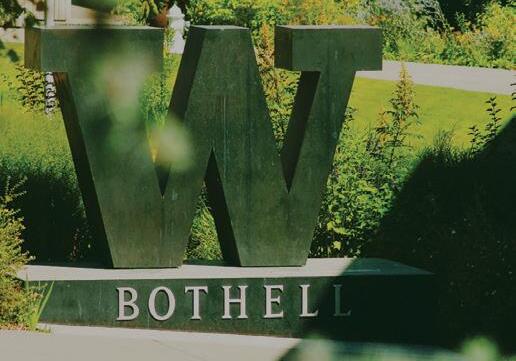
Music Day Camp designed for girls who love singing! Campers will build choral skills, explore sound and rhythm with various instruments, dance, and find new reasons to love making music with new friends. Best of all, no experience is necessary.


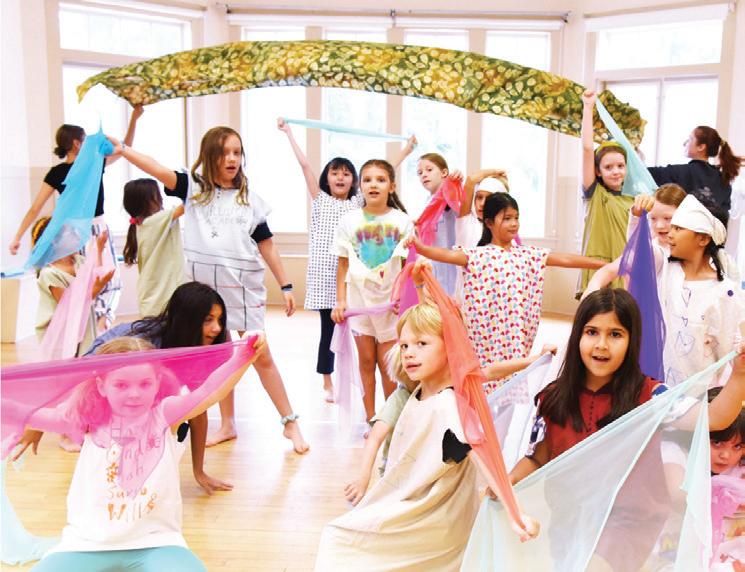
Stroum Jewish Community Center
Summer J Camp
Grades PreK-10
3801 E. Mercer Way, Mercer Island 98040 206-232-7117


johns@sjcc.org
sjcc.org/j-camp
Summer J Camp returns in 2023 from June 26-August 25. With more than 50 camps to choose from, you can build your own experience with Summer J Camp. From Core Camps to Specialty Camps, you can create a summer schedule that works best for your family.
Summit Camp & Summit Day Camp
Ages 6+
2820 Rucker Ave., Everett 98201 425-349-0131

shaun.l@summiteverett.com
summiteverett.com
We will be offering 1-day camps and 4-day camps this summer, from the end of June through August. A full day of climbing, games, and more climbing. Students will learn about gym etiquette, how to read the difficulty of routes, and generally how to best use their arms and legs to climb. Come spend a day or 4 climbing with us this summer.
Take














Grades K-12


15207 East Lake Goodwin Road, Stanwood, WA 98292 360-652-6250 killoqua@campfiresnoco.org campkilloqua.org

Camp Killoqua offers day and overnight programs for youth in grades K-12. Camp magic comes from meeting new people, trying exciting activities, using your imagination and having fun. Our programs are based on Camp Fire’s philosophy: an emphasis on small groups, individual attention, acceptance of differences and a loosely-structured child-centered approach. Programs focus on appreciation of nature, democratic group living, non-competitive sports and games, skill development, concern for others, fun and friendship. We are accredited by the American Camp Association.

Ages 3-18
Serves the Puget Sound Region 865-803-8072 ali@campwoodrich.com campwoodrich.com
Camp Woodrich exists to bring joy, adventure, and rest to families with children with special needs—at no cost to the parents. Summer camp is life-changing and character-building and we desire for all families to share in the experience!


If you have a child with special needs or you’re looking for an incredible volunteer opportunity: connect with us online! We hold events in the Puget Sound Region throughout the year.


Ages 10-15
University of Washington, Seattle Campus 888-512-8154 info@debatecamp.com debatecamp.com/seattle
At Debate Camp, we provide a fun and inspiring space for youth to develop some timelessly important skills; to hear opposing views and confidently articulate their ideas well in the company of others. Debate Camp specializes in parliamentary debate,
Ages 8-18
401 Ekone Rd. Goldendale, WA 98620 509-773-4536
summercamp@ekone.org ekone.org
At Ekone Ranch, days are spent outside, doing projects, and exploring the forests, grasslands, and canyons and building community with humans and animals. Kids come home feeling confident, supported, and ready to tackle new things!
Programs offered in art, music, ranch skills and projects, horses and other animals & more. Located on 1200 acres of protected forest in Goldendale, WA
Ages 6+ 2820 Rucker Ave Everett Wa, 98201 425-349-0131
shaun.l@summiteverett.com summiteverett.com
We will be offering 1 day camps and 4 day camps this summer. A full day of climbing, games, and more climbing. Students will learn about gym etiquette, how to read the difficulty of routes, and generally how to best use their arms and legs to climb. Come spend a day or 4 climbing with us this summer. Camps will be held end of June through end of August.
The teenage years can be tough — especially with zits or pimples. Acne isn’t caused by eating chocolate or junk food or having long hair. It all comes down to hormones and genetics. Sorry, kids.
Teens start to undergo hormonal changes related to puberty and the development of acne as early as age 10.
Acne is one of the most common skin conditions, with 85% of young people aged 12–25 years affected by it. Teens won’t want to hear that acne can extend into their 20s and 30s (and beyond!) What is acne?
3Acne is a skin problem that starts when oil and dead skin cells clog up our pores. Hormone changes in puberty make the skin oilier, and an overproduction of sebum (an oily wax on our skin) can feed the bacteria and cause swelling, redness and pus.
3Acne can occur on the face, neck, shoulders, back or chest. Mild acne usually causes only whiteheads and blackheads. Severe acne can produce hundreds of blemishes that cover large areas of skin.
Think a pimple’s just a pimple? Nuh-uh. There are different types of blemishes.
3Blackheads are pinhead-sized dark spots on the skin that are caused by small plugs in pores. When a clogged pore remains open, the pimple rises to the surface of your skin and looks black.
3Whiteheads stay under the surface of your skin and cause white bumps on the skin that are collections of oil and skin cells inside pores.
3Papules are small, inflamed bumps caused by excess oil in your skin, bacteria, hormones and some medications. They don’t have a pus-filled tip like other forms of acne.
3Pustules are red at the bottom. The tops are white or yellow and filled with pus.
3Nodules form deep under the skin. They tend to be large, solid and painful.
3Cystic lesions from acne, sometimes called acne cysts, are large and painful
pimples deep under a person’s skin that develop most often on the face, neck or upper body. Symptoms may include a red, hard, tender lump under the skin.
Treating acne
Treatment of acne differs somewhat depending on the severity. Help your teen keep their skin clean and look for products that say “noncomedogenic” on the label — that means they won’t clog pores.
Mild acne, which is most common, may be treated by simple hygiene and over the counter (OTC) creams or topical treatments. Treatment for mild acne may include:
3Washing gently with soap and water: Your teen should wash their skin once or twice a day with a gentle soap or acne wash. The most important time to wash is at bedtime. Encourage your teen not to scrub or pick at their pimples. This can make them worse and cause scars.
3Using ‘over the counter’ treatments: Acne products work in different ways, depending on their active ingredients. Some work by killing acne-causing bacteria, while others remove excess oil from the skin or speed the growth of new skin cells and the removal of dead skin cells. Look for a treatment with adapalene, benzoyl peroxide or salicylic acid.
3If you’re not sure which product to buy, start with a Benzoyl Peroxide 5% gel product (such as the store brand). It helps to open pimples and to unplug blackheads.

It also kills bacteria. Have your teen apply a pea-sized amount of the lotion once a day at bedtime. This should be enough to cover most of the acne. Don’t overdo it — using more than you’re supposed to is tempting but can make skin very red and dry. With treatment, you’ll see a decrease in new whiteheads and blackheads. Urge your teen not to give up if they don’t see results the next day. Acne medicine can take weeks or months to work.
And don’t believe that old myth that the sun is good for your skin. Wrong! Sun may redden your skin, temporarily making pimples less visible. The sun also seriously damages skin, so remind your teen to use a sunscreen that says “non-comedogenic” or “won’t clog pores” — their future selves will thank them.
If your teen’s acne doesn’t improve after two to three months, consider seeing your health care provider or a skin specialist (dermatologist). Treatment for moderate to severe acne requires the use of topical or oral prescription medications. These include antibiotics, retinoids (derived from vitamin A) and others that your doctor may suggest.


Tips on understanding, managing and treating the inevitable.
As parents, we worry about our kids’ health and do our best to nurture each child’s physical, mental and emotional health. According to a growing body of research, healthy childhood friendships are a strong indicator of a child’s future longterm happiness and wellbeing in all health areas. But data shows the pandemic isolation years and kids’ increasing reliance on smartphones and social media have impacted social and friendship skill development for many. How can we help our kids navigate the changing waters of friendship? Are there ways we can assist them in making and keeping friendships? Here we explore those questions.
Two experts offer insights
 by CHERYL MUFIN / photograph by JOSHUA HUSTON
by CHERYL MUFIN / photograph by JOSHUA HUSTON
Nothing has influenced the dynamics of today’s young friendships as much as access to smartphones and social media, experts say. According to surveys by Pew Research Center, nearly 95% of America’s kids ages 13-17 have access to a smartphone. And almost half of kids with access to social media say they are on at least one platform “almost constantly,” with
TikTok, Snapchat, and Instagram capturing the most youth attention.
At the same time, youth depression, especially among adolescent girls, is increasing, according to a report from the U.S. Centers for Disease Control and Prevention earlier this year.
We asked two leading experts on kids and digital connection about the impact of smartphones

and social media on young friendships.
Seattle’s Dr. Katie Davis is an associate professor at the University of Washington, director of the UW Digital Youth Lab, former elementary school teacher, and author of the recently released book “Technology’s Child: Digital Media’s Role in the Ages and Stages of Growing Up.”
Emily Cherkin, M. Ed, is a Seattle-based former middle school teacher and founder of The Screentime Consultant, where she works with parents, companies, and schools to help them become more intentional about the use of technology. Her book, “The Screentime Solution: A Judgment-Free Guide to Becoming a Tech-Intentional Family” will be available in January.
Seattle’s Child: Have smartphones and social media
changed the meaning of friendship for children?
Dr. Katie Davis: It has certainly changed the dynamics. I see social media as an amplifier of existing friendship and peer dynamics. The highs are really high, and the lows are pretty low. Social media can make peer interactions very public and enduring. It can also make it easy to see and quantify a person’s popularity. And all of this is happening around the clock. So, peer dynamics that may already be stressful for teens offline are amplified and made even more stressful online.
Emily Cherkin, M.Ed: Evolution takes time. There’s no way that in 20 years kids’ brains are changing so rapidly that the definition of friendship or the skills needed to build them have changed. But there is a cultural shift that has
changed since the advent of devices and social media and the pandemic certainly exacerbated that. I would argue that things like access to social media and the pandemic have resulted in lost practice with the social skills that build healthy friendships. Children need to learn and practice skills offline if they’re going to make successful friendships.
Seattle’s Child: Are we talking just mental health when it comes to the importance of friendships?
Davis: Friendship impacts all of it, from mental health to physical health. Think of kids at different stages as having certain developmental jobs. These are the front-and-center skills they need to master to set them up for success in the next stages of development. For tweens and teens, their developmental job is to form and maintain important and meaningful peer relationships and, within the context of those relationships, to figure out who they are and
According to Stanford University research released in 2022, the average age for a child receiving a cellphone is between 10.7 and 12.6. And, Common Sense Media reports that the average age when a kid starts friend -connecting on social media is 12.6. We asked four local parents with kids in this age range why (and how?) they are bucking these trends.


My 11-year-old currently does not have digital media or a device [but] does constantly ask for a phone because of the peer pressure of his classmates who all have devices and/or smartwatches.

We are holding that line until high school, age 14 or 15 because social media has direct negative impacts on emotional and mental health, including increased suicidal ideation. I do believe it has been isolating for my son not to have access, because he feels embarrassed for not having a device like his friends and classmates and he doesn’t understand why.
I think social media impacts self-image and confidence. Constantly comparing yourself to others’ ideal selves can result in depression in all forms, especially if you don’t yet have the ability to recognize boundaries, emotional cues, or the difference between when things are serious and not so serious. Developing a filter to navigate the internet and all its content takes growing up and experience.
develop a satisfying sense of self and identity. The ability to do this sets them up for positive emotional development, mental health, and future relationship success.
Cherkin: In addressing screens and the challenges they bring kids, we are fighting to protect their future cognitive, mental, emotional, and physical health, period. Other than climate change, this is, in my mind, the biggest thing impacting our children and their future. One in three teen girls is considering suicide and 57% report anxiety and depression. It is a crisis. New York University Professor Jonathan Haidt, a psychologist I deeply respect, has said that we can now say there is a causal relationship here. There is enough research to say social media causes mental health epidemics in teen girls. We have to stop saying it’s just correlational. There’s no question about the health impacts. This is very real.
CONTINUED ON PAGE 30 >
I will say, his school-admin istered laptops have access to YouTube, which has been a vortex of sometimes inappropriate content and time. For his ADHD brain, YouTube is addictive. And how do we even know at this point how much YouTube is costing us as parents? I think it’s an iceberg, and there is so much underneath we can’t see yet.
It’s such an interesting culture we live in, where we have all this technology to help us communicate and connect. And yet we have dissolved behind the veil of chat, pings, email, likes, and so on. Where is the value of face-to-face conversation? Here lies the impact: because of the lack of face-to-face and voice-to-voice, we lose our authenticity and ability to connect.
Ihave four kids, ages 16, 14, 12, and 10. My middle schooler does not have a smartphone. But, with my oldest kids, I caved by 7th grade. I saw the negative impact it was having on them not to be able to communicate with their peers in the most socially acceptable way: smartphones.


One of my kids struggles to make friends and I do wonder if that’s because she’s not on “the market” online. She wonders about that, too, and views it as a space where her friends have had the benefit of experimenting with their identities in a less personal way. It’s tricky because I think social media feels safer than in-person interactions to our kids. But the consequences of what they post online have longer-lasting impacts than anything embarrassing they might say or do in person.
My partner and I have told both of our older kids that we would support them if they wanted Instagram or TikTok, but have also warned them about the research indicating how negatively social media impacts teen girls’ mental health. They both made the choice not to start using those platforms until recently and I know we are lucky we had their buy-in.
At the end of the day, I am extremely concerned about our young people and the impact of social media on their mental and emotional well-being. We are going to have to put social media in its rightful place and downgrade its importance in shaping our social lives. However, I don’t think one medium can be blamed for all of society’s problems. Social media just highlights many of the broader issues we need to address as a culture: misogyny, racism, the climate crisis, and so on. Our kids are sad because of the very big, very scary problems in our world. Problems that are magnified by
CONTINUED FROM PAGE 29
Seattle’s Child: How exactly does digital media, and especially social media, impact childhood friendships?

Davis: Teens have different kinds of social media experiences depending on the platform and how they’re using it. There’s the more public-facing social media experiences and then there are the smaller interactions among closer friendship circles— responding to close friends on Instagram or Snapchat or texting in group chats. They both introduce a whole bunch of complicated interpersonal dynamics. Being able to navigate these dynamics, for better or worse, has become part of adolescent peer relationships.
Let’s say you’ve got a small group of friends and they’re all in a group chat. And then one day, some of the friends decide to kick one kid out of the group chat. This new form of exclusion mirrors the kinds of exclusions that happen offline, but it’s just more insidious and never goes away.
In another direction, a lot of teens are leaning on each other and sharing lots of emotional content through social media. That can become a source of stress on the receiving end – kids feel like they always need to be there for their friends. A friend texting you that they’re contemplating hurting themselves or even just sad can cause a lot of stress for a teen.
Keeping in mind these sources of stress –and asking your children about their specific experiences—can be a good way for parents to think about and connect with their children around their digital experiences.
Cherkin: I have a 5th-grader and a 9th-grader and I also taught middle school for 12 years, so I have a pretty good perspective on tweens. When I first started teaching, none of my students had smartphones at all, they were brand new and most adults didn’t even have them. Only an occasional kid would have a flip phone. And they’d be mortified if it went off because their parents made them

take it to school, right?
Fast forward 10 years and they come into the classroom talking about things they’ve seen online or photos that had been posted of parties that they weren’t invited to or friends hanging out, tagging other friends, but not tagging them, or making comments about how somebody looked. It has infiltrated the dynamics of the classroom, it is [now] affecting their social relationships.
By the time I left the classroom in 2017, 95% of my students had smartphones. And all those pressures and ways of being left out and isolated have just gone up in the last five years, especially during the pandemic. Kids who aren’t connected feel left out and kids who are connected feel more left out because now they see all the things they are left out of. Either way, it leads to high levels of anxiety.
Seattle’s Child: Do kids distinguish between social media “friends” and real friends?
Cherkin: Calling social media contacts “friends” is a manipulation of that word and it’s problematic. Parents and teachers have a huge responsibility in talking about what makes someone a good friend and why. We don’t have thousands of friends in real life. But we can have thousands of friends online. It’s not the same. Friendships are complicated.
For example, it’s not uncommon for my 11-yearold to come home and say “I had a fight with my friend.” At her age, we have to unpack that. I feel grateful that she does not try to unpack it over text or over a social media platform. When we were in middle school and had a conflict with a friend, we might go home and feel bad or sad and then maybe we could call someone and talk about it. What happens now is kids come home, they post it on a social media account, and hundreds if not thousands of kids may read and respond to it. So something that might be a minor conflict becomes this massive thing
Dr. Katie Davis Emily Cherkin, M. Ed“Calling social media contacts ‘friends’ is a manipulation of that word and it’s problematic. Parents and teachers have a huge responsibility in talking about what makes someone a good friend and why.”
Emily Cherkin, M. Ed
"Put social media in its rightful place"
comments from DIANA CHERRY
don’t know how to initiate a friendship or even initiate a conversation.”
lot of playdate coaching these days as well:
by CHERYL MURFIN photograph by JOSHUA HUSTONIf anyone has seen kids’ friend-making and other social skills evolve — or devolve — these last three years, it’s elementary school counselors. They’ve had a front-seat view as kids navigated two-plus years of isolation and then returned to the social milieu of the classroom.
“I’m noticing a lot of kids don’t have the social skills that you would expect students at their age level to have,” says Lynsey Burge, a counselor at Giddens School in Seattle. Giddens teaches students from preschool through grade 5.
Tracey Thompson, a public school social worker at Seattle’s Lowell Elementary, is seeing the same thing.

“We have students now who are in second, third and even fourth grades who missed out on those valuable and important opportunities to socialize,” Thompson says. “You see it in their behaviors.” Like Burge, Thompson runs a friendship group with kids at her school.
“I notice that some students are almost on a toddler level when it comes to things like sharing, being respectful to each other, saying ‘Please pass the crayons,’” Thompson says. “I am literally doing the basics I used to do with much younger children.”
Burge finds herself teaching Friendship 101 a lot these days: “We start with how to make a friend. How do you introduce yourself to somebody? I’m seeing a lot of kids waiting for the other person to come to them. They
Burge recently worked with a 2nd grader who was struggling to make friends.
“I started by asking ‘What do you want in a friend?’ That way we could talk about their hopes. And then we brainstormed together,” Burge says. “Ultimately, the goal was not to tell them what I was going to do to help them make a friend, but to have them come up with some ideas. It’s like dating. I tell everybody I’m like a matchmaker, but for kindergartners.”
Like other school counselors in the region,
“I am finding it is hard for them to even think outside that very structured way that COVID made people think.”
Adds Thompson: “I have to say that it warms my heart and gives me hope when I see parents and children linger after school and when I see parents engaged in talking with each other again.” But Thompson also gets why some kids may be more comfortable engaging digitally with their peers.
“It’s easy for me, who’s from a different generation, to say, ‘Kids need to play outside
Burge and Thompson worry about kids’ overreliance on digital connections, including online games.
“That’s often how kids are hanging out with their friends, not through in-person playdates,” Burge says. That is problematic since research supports the theory that friendship skills are best practiced in person. This year, both counselors have been working to reconnect kids — and parents — with that simple idea.
“Kids follow what is modeled to them,” Burge says. “And what I have seen is adults aren’t interacting the way that they might have before the pandemic.” Burge says she does a
more,’” she says. “But parents don’t feel safe. They are on hyper-alert. They have fear. And our young people, because of their access to technology, hear and see things we didn’t as kids,” Thompson says. “There’s been a loss of innocence in the last few years. So to many kids, it feels safer to communicate via Roblox, Minecraft, or Snapchat.”
To help their kids develop in-person skills, Thompson urges parents to get them engaged in extracurricular activities. But she recognizes her own privileged mindset:
“Many of our parents are working long and hard to put a roof over their heads. That
School counselors are helping kids regain social and friendship skills
“I notice that some students are almost on a toddler level when it comes to things like sharing, being respectful to each other, saying ‘Please pass the crayons.’”
Tracey Thompson
At age 4, Jessica Dodge’s son had very few little buddies.
“COVID was isolating for Baker,” Dodge says. “He didn’t have many chances to make many new friends.”
Then one day, while visiting Woodland Park, Dodge’s heart soared as she watched her son walk up to another child and ask, simply, “Will you be my friend today so we can play?”
Seeing the two kids hit it off, Dodge asked the parent of the other child for their contact information and followed through by inviting them to a second playdate. It’s not complicated
“With the pandemic, he just hadn’t gotten to practice in a social setting,” Dodge explains.
“Something about that exchange made me realize as adults we complicate things too much. So I decided to make a conscious effort to help Baker build his community. We are putting some real intention around it.”
What does that intention look like? It’s as simple as Baker’s question on the playground.
“We’re taking that same energy and we’re modeling it by reaching out to other parents by text and asking ‘Will you play with us today?’” says Dodge. “It’s just as easy as that.” It’s about him
Dodge says she and Baker’s other parent are specific in their goal. It isn’t about expanding their own parent network, or the
whole family’s, but specifically about growing Baker’s friend circle.
“When my daughter was little, we had the PEPS group and friends with children of a similar age but it wasn’t specifically about finding peers for her, it was really about building our own community,” says Dodge. “This is different. It’s all about him.”
The friendship project rules
Rule one: Baker’s parents, who live in different homes, first agreed that if one couldn’t take him to a playdate or social event, the other would step in if at all possible.
Rule two: Next, they agreed to use texting as their central way of communicating with other parents and each other about potential playdates. When sending a playdate text, they include the other parents to keep all in the loop.
Rule three: They strive to make “new friend” playdates simple. “It’s much easier to say yes when it’s something like meeting up right at the school bell or grabbing just 30 minutes to play at a neighborhood park.”
Once a friendship has blossomed, complex playdates may come into the picture. “But for actually making friends” says Dodge, “removing the pressure and question of whose house to go to and the need for a grand plan in our already overscheduled lives has worked best.”
What they did
With those agreements in place, Baker’s parents encouraged him to practice his friendship skills by approaching kids he was interested in playing with, just as he had at Woodland Park. From there, they step in to:
3Approach the child’s parent about a potential follow-up playdate
3Collect parent contact information
3Make it a priority to follow through with a group text and invitation
Second playdates are always at a public place, a park, or another kid-friendly space. If it goes well, the next step might be an in-home playtime.

Playdates don’t have to be unwieldy, Dodge stresses: “We have discovered the no-fail, 30-minute, all-ages hangout: ice cream and a walk!”
Meeting the goal
The results of the Baker friend-making action plan speak for themselves. At age 6, he now has a growing core of friends and hangs
by CHARLENE DYOnTuesdays and Thursdays, Ryan Bunda, a school counselor for Highline Public Schools, sets up a classroom for ROAR, or Room of Alternative Recess. Amidst board games and a foosball table, he helps students practice how to play.
Yes, play. It’s the building block of childhood friendships.
And friendship, as it turns out, is about more than just fun.
“We know from research that children who have close friendships are less likely to experience depression and anxiety, and are better able to cope with life events,” says Dr. Karen Thierry, a developmental psychologist for Committee for Children (CFC), a not-for-profit headquartered in Seattle. She oversees research for CFC’s Second Step programs, which teach socio-emotional learning in the classroom.
Six Expert Tips 1 2
In fact, Thierry says research has shown that friendships even improve physical health:
“Lower blood pressure! Stronger immune systems! Stronger cardio-vascular health! Friendships are critical in so many ways.”
The good news, according to Thierry and Bunda, is that like math or reading, the skills to be a great friend can be learned, both at school and at home. Here are their expert tips:
Help kids identify their emotions
Helping kids learn this skill can be as simple as verbalizing what you observe, notes Bunda. Try “Hmm, you look upset” or “You look happy” to open a conversation about how they feel.
Additionally, Bunda suggests acknowledging emotions by saying something like, “Yeah, I would feel really upset, too, if someone pushed me.” “Validating feelings helps you form a connection with your child,” says Bunda.
“It helps them feel felt and heard.”
3
Understanding their own emotions prepares kids for understanding others’ emotions.
“Those who can empathize with others are the ones who can maintain strong friendships,” notes Bunda.
Most important, says Thierry, is to be a model.
“When parents are showing others empathy and kindness, kids are watching. They will imitate, they will internalize,” she says.
Empathy includes skills such as understanding social cues and body language. Try reading books or watching a show together to practice emotional recognition.
“You could ask, ‘What do you
out with them outside of school two or three times a week. His friendship confidence has grown and his anxiety has decreased.
“He feels a sense of belonging and like he has more buddies,” Dodge says.
Dodge stresses that she does not dictate which kids Baker approaches to offer a hand of friendship.
The widest circle
“I used to want there to be a good connection between the parents and myself, too,” Dodge says. “But now I really just try to let that part go and focus on allowing Baker to build bonds with whomever he wants to. There is
think this character is feeling?’” suggests Thierry. “‘What are the clues to what they are feeling?’”
“Playdates, extracurriculars. These are opportunities to practice interactions with other children,” says Thierry. She notes that hanging out in person is critical, because while technology can provide some benefits, “socializing on a screen is not the same as socializing in person.”
So much non-verbal information can only be seen when you’re face-to-face with someone.
“They can have a smile on their face, but if you look at the rest of their body, they might be fidgeting,” notes Thierry. “It might mean that they’re uncomfortable. You don’t see that on a
screen.”
a real benefit in just letting the child choose whom they want to play with and being totally open to any family.”
They make it a point to go to parks outside their neighborhood.
“I think people can be a little snobby or standoffish. But real communities are diverse,” Dodge says. “Real community is not just ‘We’re hanging only with the kids in our class, or only with the kids in our grade, or only with the kids who live in the neighborhood.’ It’s important for us to reach out to anybody and everybody our child feels inspired to connect with. That diversity is important.”
Also, in-person hangouts provide opportunities to coach kids on specific skills, like initiating play. In his Room of Alternative Recess, Bunda says that sometimes when kids pick up a game, “they have wide eyes and look frozen.”
He might encourage them to ask, “Does anyone want to play this game with me?”
Get curious about conflict
Kids benefit from learning how to deal with conflict. So if your child reports getting pushed on the playground, Bunda encourages caregivers to respond with curiosity by asking, “Tell me more. What happened before? What did you do after?” These questions provide context
CONTINUED FROM PAGE 31
leaves little time — or money — for extracurricular activities.” She encourages families to lean on school and community resources — social workers, family support workers, and organizations that can help cover costs and facilitate kids’ participation.

Says Thompson: “Kids need to engage face-to-face. They learn how to compromise and problem-solve. They learn leadership skills. Schools become very valuable at helping in this area. . .”
Thompson and Burke also advise simple unstructured playdates, preferably with non-digital outside time, to boost friendship skills. Boredom, research shows, boosts creativity and both counselors say kids could use more of it.
“Parents can model being brave and vulnerable by inviting people and maybe even getting to know somebody new,” Burge says. “If your child has a peer they are interested in being friends with, invite the whole family over, so that you’re all in this new territory. It’s really important. The root of helping kids develop social skills is modeling and creating playdates and opportunities for them to practice.”
Growing the skills to build strong childhood friendships can have long-lasting effects.
“Strong relationships get us through the toughest storms in life, that sisterhood, that camaraderie with your peers, helps you weather storms and not feel so isolated,” Thompson says. “When you have a strong network of people in your life, or even if you just have one or two strong connections, the statistics show you are more likely to be successful in life.”
for what happened and give kids a chance to reflect on whether they played a role in the conflict as well. It’s also a prime time to check in on their feelings.
Bunda suggests asking, “When that happened, did you feel like you: Wanted to push back? Wanted to cry? Get help?”
Once a kid can identify how they feel (angry? upset?), offer tools to help them “get to a place of calm,” counsels Thierry. This might mean taking a break from a friend or doing some deep breathing.
“This helps them get back into the thinking part of their brain,” she says, adding that it sets them up to be more effective in finding a solution to the conflict.
For younger children, offer suggestions. If two preschoolers both want to use a toy, ask if they want to take turns or play with it together, says Thierry.
For older kids, she encourages parents to let them practice figuring things out on their own. Thierry tries to be a sounding board when her own teen wants to chat.
“I’m just so excited when she tells me anything these days!” she chuckles, “But I’ll listen. I don’t offer advice at first. Fortunately, she’ll often come up with some really good ideas on how to problem-solve on her own. Kids might make mistakes along the way, but that’s all part of the learning process.”
The folks at the Seattle-based nonprofit Game to Grow may surprise you with their answer to helping kids develop the critical social, emotional, problem-solving, and relationship skills they need to thrive: role-playing games.
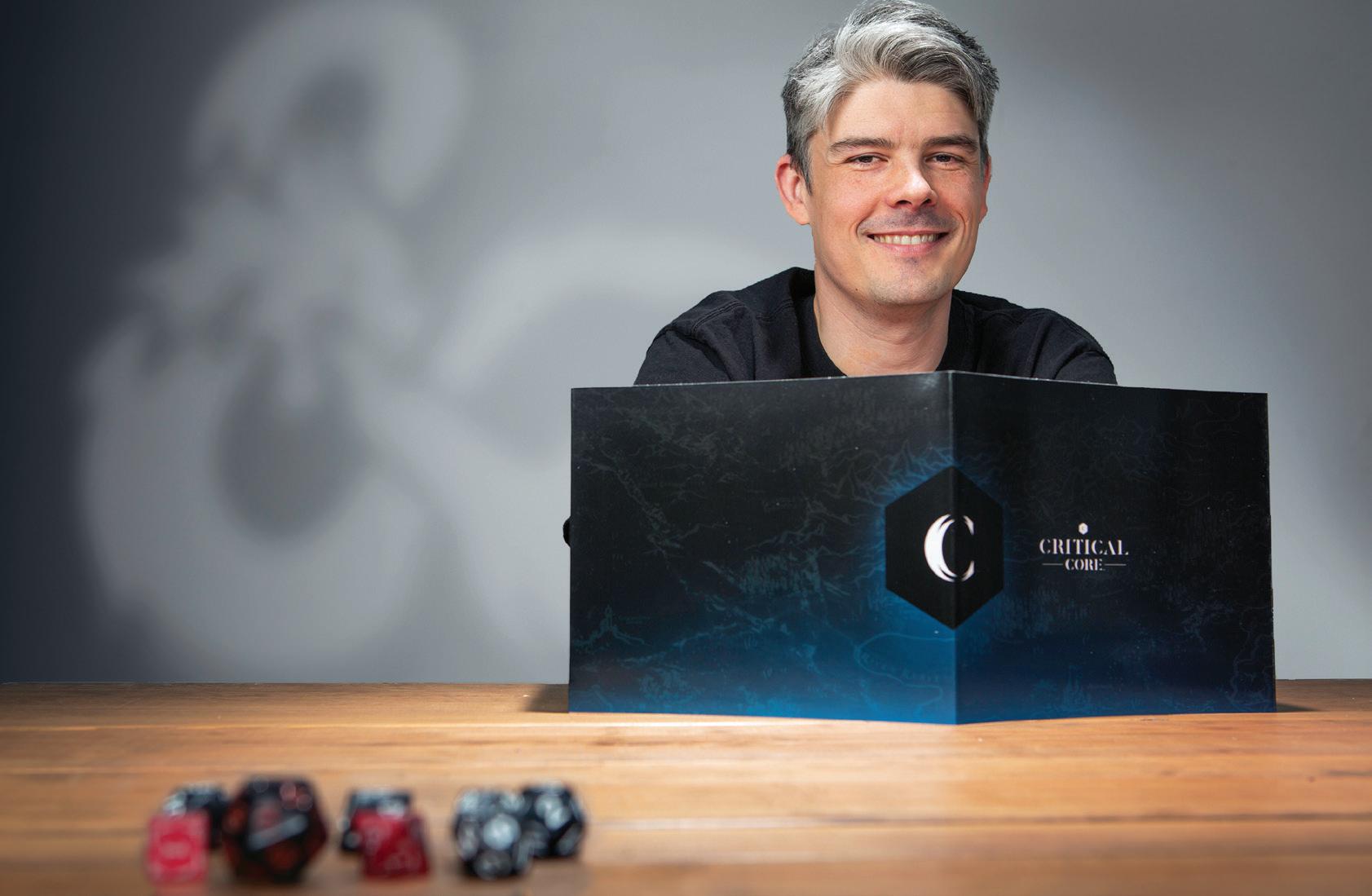
That’s right, facilitated sessions of Minecraft and that good ol’ relic of 1970s geekdom and now Hollywood blockbuster, Dungeons & Dragons. The key word being facilitated.
Game to Grow collaborated with the nonprofit education research group Foundry10 to study the impact of imagination-centered role-playing games on critical skills development in youth, particularly in the areas of conflict resolution, emotional self-regulation, assertiveness and social interaction. Their report “How Youth Can Build Social and Emotional Skills with Tabletop Role-Playing Games” was published in 2023.
Jennifer Rubin, a Foundry 10 senior researcher, said of the report findings: “I would like all parents to understand the place that role-playing games have in terms of allowing young people to learn how to handle conflict and other challenges, and to take the perspectives of others while asserting their own ideas.
“When facilitated, these types of games offer a ‘creative sandbox,’ a safe place for young players to practice these skills without undue consequences,” Rubin says. During the study, Rubin and her colleagues observed and supported a group of 6th- and 7th-graders as they navigated the challenges of a role-playing game.
Game to Grow was created to do just that: connect kids with opportunities to create, learn and practice social skills through supported role-play
games online and in person.
“It’s not about buying the game and turning kids loose,” Game to Grow co-founder Adam Davis stresses. “It’s about facilitating the play to optimize learning.”
Davis believes games have the power to improve players’ lives, and that power is increased when players receive feedback from a trained facilitator. Game to Grow is working to expand access to facilitators who encourage young players to stretch themselves in choosing a character, try on different “ways of being,” and be the best people they can be. Facilitators support growth but do not provide clinical therapy. Research indicates that the strengths developed while playing a role often carry over into real life.
Game to Grow facilitators predominantly support Minecraft and D & D play. But the organization is also the designer of Critical Core, a basic role-playing utilized by therapists, educators, and parents as an alternative to traditional social skills training programs.

Davis hopes to see role-playing games become part of school curriculum. Playing can strengthen relationship skills in many kids, he stresses, not just kids who feel isolated. 3gametogrow.org
CONTINUED FROM PAGE 30
— and it’s recorded. It’s no longer about conflict resolution between two people.

Seattle’s Child: The average child receives their first smartphone between ages 10 and 12, according to a Stanford University study. Do you have thoughts on that? What is the right age?
Davis: As a parent, 10 seems very young to me, but I know that there are many factors involved in a parent’s decision to get their child a phone. For instance, I have a six-year-old, and I’m going to be following what his peers are doing as well as what’s going on at school. Is not having a phone getting to a point where he’s feeling like he’s missing out on something, either socially or academically? I’m not convinced that children are missing out on a ton without a phone at 10. But I believe the right age is very specific to the child, where they are in terms of their maturity level, and also what’s going on around them in their peer group and at school.
I like to think in analogies. When you’re raising a kid and teaching them to ride a bike, or teaching them to swim, you don’t just put them on a two-wheeler automatically or you don’t just throw them in the deep end of the pool. You give them appropriate supports — training wheels, swim armbands, and floatation devices, to help them.
What training wheels can you provide for your child as they’re entering into owning a phone or starting to engage with social media? There are a lot of tools out there. (Read more online at 3Seattleschild.com/ phonetools)
Cherkin: I always joke that I’ve told my kids they will get their first phone at 25, that way I could come down from there and they’ll think I’m so nice. I advise: Delay as long as possible. But I would say, a minimum of 16 years old. Why would we hand them a highly addictive, highly problematic tool and then be surprised when there are problems or addiction or mental health issues cropping up? Would you hand your 10-year-old car keys?
I don’t know a single parent who would do that. And yet, that’s
what we’re doing. The problem is, there’s a perception that we as parents are left out without our phones and social media, and we worry that our kids will be left out. That’s our parental anxiety, right? But I’ve talked to hundreds of parents and not one of them has ever said to me, “I wish I’d given my kid a phone sooner.” It is always “I wish I had waited. I wish I knew then what I know now.”
The impulse might be to give a child a smartphone for safety, so you can track them. But doing that creates other dangers. There’s been an uptick in predatory grooming and porn. Catfishing and scamming have just blown up in the last few years. What I say today is not what I said a few years ago, because it’s gotten that much worse. So I always say to parents,


if you are not ready to talk about porn, to tell your kids what to do when they see porn, then they’re not ready to be on the internet. And they are certainly not ready for social media. It’s not a question of if they will see it; it is a question of when they will see it.
The Federal Children’s Online Privacy Protection Act puts the age limit at 13. That’s the law, even if it is not enforced. I would argue that is still way too young.
Seattle’s Child: So where do you start? How can you help your kids feel connected to their tech-savvy friends or ease them into

healthy usage?
Davis: Have conversations with kids about why you’re using monitoring tools, or ideally even negotiate with them about what are sensible kinds of monitoring and what should be allowed. Research today shows that a lot of teens want support and that they thrive most with clear boundaries. Perhaps counterintuitively, establishing clear boundaries can actually give teens a sense of freedom. They know exactly what to expect. And then within those boundaries, they have the freedom to express themselves and pursue their interests.
Remember that early adolescence is a process of increasing independence and autonomy but in the context of supportive relationships. It’s about developing autonomy but maintaining connection. That’s why I think involving kids in the decision-making and the conversation is important. At 11 or 12, they’re old enough to really understand and have a conversation about the risks out there. And they’re old enough to tell parents what they’re excited about, and what they’re nervous about, and have parents really listen and work with them. For it to feel like a self-directed (autonomous) experience, kids need to be part of that conversation.
At the same time, parents have every right to start them off slowly and to maintain a lot of involvement in what their child is doing,
CONTINUED ON PAGE 36 >
Parent Views
comments from JESSICA VAMMENI have a 10-year-old 5th-grader and a 2nd-grader. Neither has a phone or any access to social media. So far, not having a phone hasn’t been a problem outside of the fact that they want one. I let them give out my number to friends. We did get them Gizmo watches this year for communication and safety. It allows them to call or text approved contacts.
I post fewer than five times a year. Despite that, they are very interested in looking and reading over my shoulder any chance they get. That strong desire to look and know what I’m looking at makes me concerned about how they will handle it when they get older. I’m nervous for them and worry about kids’ constant usage, addictive qualities, and issues with friendships and relationships. Through my job, I’ve seen young adults that have grown up in the age of phones and social media having a hard time communicating, retaining information, and staying focused at work.
I know I can’t shelter them forever. I worry about the hurt feelings. I think it is easier for people to be unkind behind a screen. I can teach them to deal with these feelings, but these hurtful messages are so public. Mistakes are how we learn. [But] kids are growing up in an age where they can’t make a mistake without all their peers knowing about it.
As a parent, there are times I have to give myself a break from the phone due to the constant overstimulation. I don’t think kids have this ability. I’ve been watching other families and parents navigate through this and I think the next few years, as we delve into middle school, will be different from what our family has seen so far.
My son is 11 and has no access to social media. He has no idea what TikTok is. But, at his school, they do talk about the impacts of social media and we talk about the broader question of what being online means, even though he doesn’t have a smartphone.
I don’t want my son to grow up feeling like his friends like him or don’t like him because of Facebook or Instagram or Tiktok. So, right now we are trying to teach Gregory that in the online world it is important to process what you see with your mind and heart. I tell him “God has given you a pure heart and sometimes you are going to witness things online that hurt your heart and change your perspective.” At the same time we are explaining to him that sometimes if you say something, you can’t take it back, especially online. A recent conversation went like this:
‘Here, let’s squeeze this tooth paste out. Now, Gregory, can you put it back in?’
‘Mom, I can’t. I can’t put it back in.’
‘Okay, Gregory. So you see, sometimes you might say something to your friends that might hurt their feelings, and you can’t take it back.’
I want my son to show acts of kind ness. We are constantly reading about and practicing loving kindness and I hope that’s what he brings with him when he is old enough to access social media. I don’t know what age that will be [but] you can bet I am going to be that mom who really sets limits.
For now, he is busy with a lot of activities. And we spend a lot of time together as a family. I think that’s what we as parents need to be promoting to our children – the importance of getting outdoors, getting oxygen, getting sunshine, and family time. Let’s empower our kids to use social media to promote kindness!

"You can't take it back"
"I can't shelter them forever"
CONTINUED FROM PAGE 35
at least in the early years. Tools like teen-oriented operating systems and parental monitoring apps allow kids to gradually gain experience with networked communication in the context of parental supervision and support.
Cherkin: My daughter is 11 and some of her friends have phones and they text so we have recently started this conversation. We’ve actually been sharing my phone number as a starting place. She has no personal ownership of the phone. This is what I recommend parents do before they even think of giving a phone or social media access to a child.
Is it annoying? Totally. It is absolutely insane 99% of the time. But it is fascinating. For example, in a single 30-minute period, I got 243 text messages. I was able to ask my daughter, do you want to get 243 text messages in 30 minutes? How do you even manage that, right? And 90% of it was misunderstanding and misinterpreting going back and forth among the kids. My instinct was to tell my daughter “Don’t ever do group chats,” because they’re super annoying. But I wanted her to come to that realization on her own. So we spent five days navigating that together. I recommend parents spend at

least a week with their kids navigating it. Recently, my daughter got into a conflict with a friend and they’d start texting after school. She was using my phone. And I would sit with her and offer guidance like “Don’t start writing back when you’re mad.” I saw firsthand how those little dots that tell you that someone’s writing back can ratchet anxiety up. I was able to help her calm down and get to think about what message she really wanted to convey.
Seattle’s Child: What’s your bottom line on this issue of social media’s impact on kids’ friendships and mental health?
Davis: Today’s teens are doing what teens have always done—figuring out who they are in the context of their peer relationships— but social media and smartphones change the dynamics and raise the stakes. Teens may be more technically savvy than their parents, but they still need our support in managing the interpersonal dynamics and
stressors that frequently arise online.
At the same time, I would like to see the platforms themselves take more of a role in supporting kids, and I know many of them are trying by introducing features like take-a-break nudges and private-by-default accounts. How effective these efforts are remains to be seen, and I’m skeptical that we can rely on tech companies to figure this out without government intervention.
Cherkin: This isn’t a kid problem. This is an adult challenge. Parents are inundated with social media 24/7 and that has increased our own anxiety and that, in turn, impacts our kids. To me, this is evidence of why we should delay social media as a tool for friendships for kids. We as parents have to get a handle on it first in order to be able to help our kids and it’s hard. But social media plays on our humanness, our need to belong, and our need to be validated. And for developing teens and tweens especially, that peer validation is hugely important.
I see social media as an amplifier of existing friendship and peer dynamics. The highs are really high, and the lows are pretty low.
Dr. Katie Davis






Alpha-Lit Seattle is Washington’s premier marquee letter rental company for all of your events. Our rentals include setup and delivery - so leave the stress to us. With a full inventory of letters, symbols, and numbers, we offer numerous options to customize your display for that extra WOW factor. We are a small locally owned and operated family business and 100% of our inventory is American-made.




Custom themed cooking and art parties in Bellevue for kids 3-12

Venue
Party Decor
Cake and Party Food




Goodie Bags
Experienced Animators and Dress-Up Characters


info@partyandcook.com (206) 702-0866 PARTYANDCOOK.COM At

American Dance Institute
Ages 2.5-99

8001 Greenwood Ave. N., Seattle 98103 2410 32nd Ave. W., Seattle 98199 7500 25th Ave. N.E., Seattle 98115 1250 N.E. 175th St., Shoreline 98155 206-783-0755 adiseattle@americandanceinstitute.com americandanceinstitute.com
Make their birthday memorable with our dance-themed birthday parties. We provide a birthday party dance class at one of our four Seattle area dance studios in Greenwood, Wedgwood, Magnolia, or Shoreline, and a fantastic dance instructor who will engage your special birthday person and all of their friends.
Auburn Parks, Arts & Recreation

All Ages 910 9th Street SE, Auburn, WA 98002 253-931-3043 play@auburnwa.gov auburnwa.gov/party
Auburn Parks, Arts & Recreation helps bring the fun to the party. We offer youth party packages (sports, bounce house, or crafts); tween/teen parties at The REC Teen Center; rock wall climbing packages, and a host of options for hands-on parties and celebrations in our Makerspace.
Big Air Trampoline Park
1101 Outlet Collection Way SW Suite 1275, Auburn 98001 253-943-6770 bigairusa.com/auburn
Big Air is a premiere indoor adventure park offering dynamic play on 13 amazing attractions and fun for the entire family. Key Attractions include a Ninja Course, Racing Ziplines, Trampoline games and Rock-Climbing wall. Big Air specializes in providing the ultimate hassle-free birthday parties for kids.
Crossroads Bellevue
15600 NE 8th St., Bellevue 98008 425-644-1111 info@crossroadsbellevue.com crossroadsbellevue.com
Crossroads Bellevue is your destination for birthday fun. Choose from exciting party destinations, including Creatively Yours Ceramic Studio, Snip-Its Kids Salon, The Studio Fine Art Classes, WiggleWorks Kids, and more. Plus find decorations, ice cream, cake and gifts all in one stop.

Dreamland Ponies
Ages 1-100
Maple Valley, WA 425-495-3130
hello@Dreamlandponies.com dreamlandponies.com
Create a truly unforgettable experience for your child’s next party or event with Dreamland Ponies! Our upscale pony


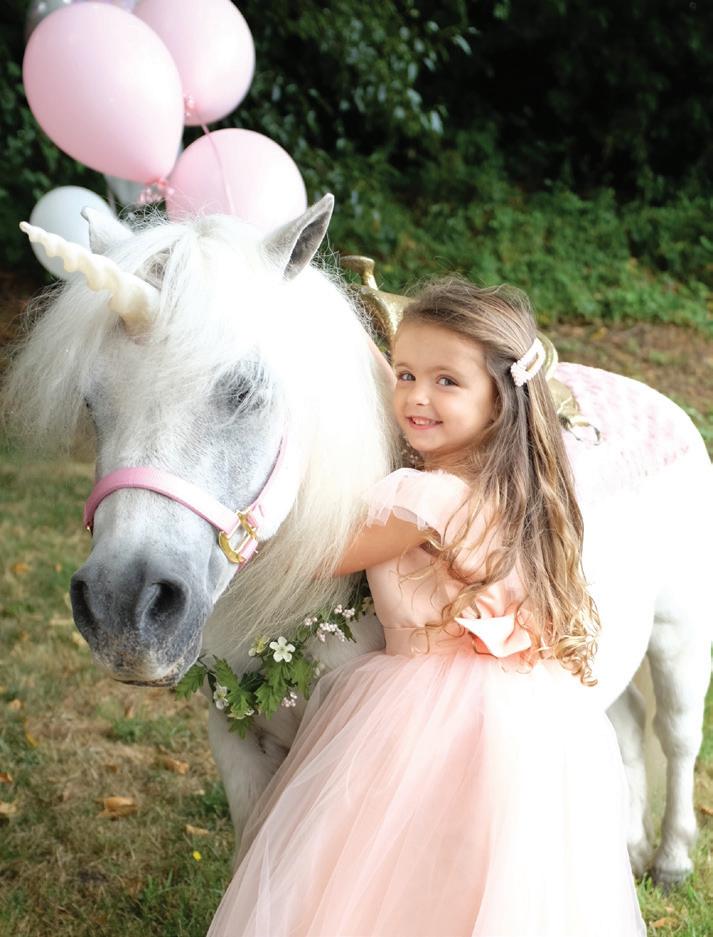


















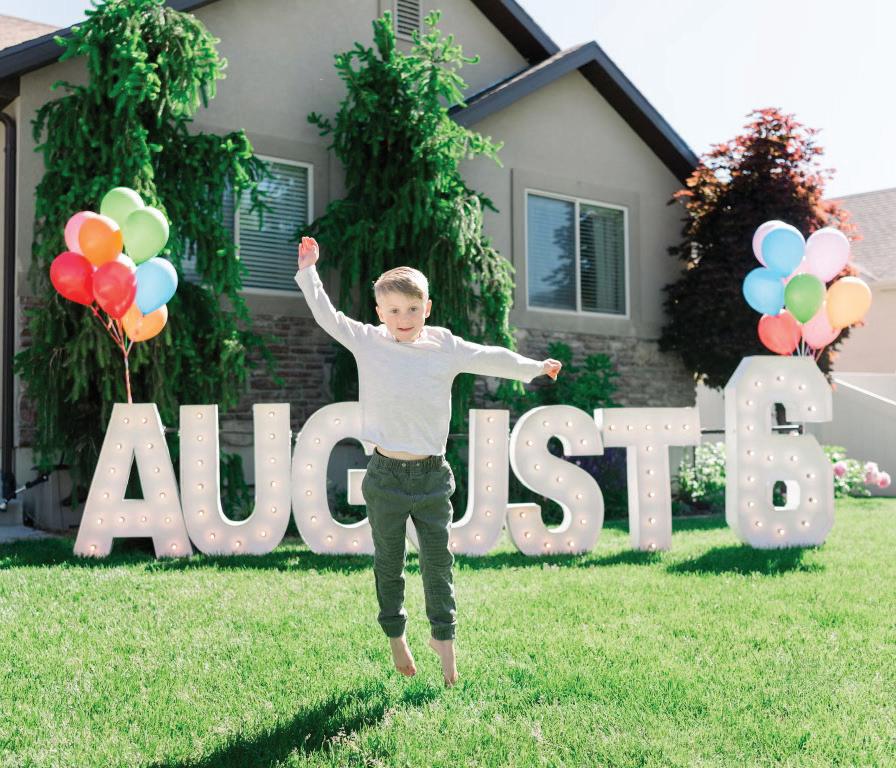






















































and animal entertainment includes beautiful ponies, magical unicorns, and a fairy tale petting zoo. Whether you’re planning a private party, wedding, therapy session, or commercial event, our experienced team will ensure every detail is perfect. We pride ourselves on our attention to detail and love for our animals. Book today for a truly enchanting experience!
Elevated Sportz
Ages 3+
18311 Bothell-Everett Hwy, Bothell 98012 425-949-4488
RSVP@elevatedsportz.com
elevatedsportz.com
At Elevated Sportz, bounce on trampolines, be a warrior on our ninja course, duke it out on the battle beam, and have an action-packed day on our 2-level soft playground! Complete with a wide variety of arcade games, a cotton candy machine, and a cafe! Elevated Sportz is a family-friendly venue that’s perfect for all your birthday parties, social gatherings, and team-building events.
Faith’s Bounce Party Rentals


Ages 1-16
206-717-5230
info@faithsbouncehouserentals.com
faithsbouncepartyrentals.com
We are a family-owned and -operated Bouncy House and Party Rentals company. We are licensed and insured and double our due diligence in cleaning and sanitizing all items. We cover several of your party needs, from bouncy houses, soft play, tables and chairs, and games, and we can save you time setting up your decorations.

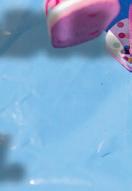

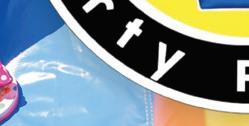





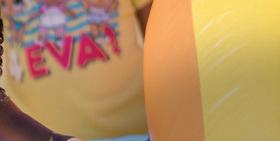
Hibulb Cultural Center and Natural History Preserve
All ages
6410 23rd Ave. NE, Tulalip 98271 360-716-2600
info@hibulbculturalcenter.org
hibulbculturalcenter.org
Guided tours, interactive demonstrations, group rates and private rentals are available.
Infinity Farm
All ages
16523 Issaquah-Hobart Road SE, Issaquah 98027
Infinityfarmissaquah@gmail.com
Infinityfarmissaquah.com
Ready to celebrate a birthday or special occasion at Infinity Farm? Come to the farm, where your party will get private access to explore our three acres, feed our farm animals, and celebrate with the guest of honor. We strongly encourage families to schedule their party at least six to eight weeks in advance. To reserve your party, please email us.


Pacific Science Center
Ages 2-18
200 2nd Ave. N, Seattle 98109 206-443-2001
venues@pacsci.org
pacificsciencecenter.org/visit/birthday-parties/ PacSci birthday party packages include a variety of fun and educational hands-on activities to ignite curiosity in all ages. When the festivities are over, your party can spend the rest of the day exploring interactive exhibits. Packages include a private room, a coordinator, and a 10-minute science-themed experience.
The Painted Palace
All ages
1813 130th Ave. NE, Suite 210, Bellevue 98005 425-889-5100
info@paintedpalaceparties.com
Paintedpalaceparties.com

The Painted Palace specializes in birthday parties and other boutique events at our beautiful venue in Bellevue, or we are happy to come to you for your next party or event. Our magical parties feature character visits, paint parties, crafting, princess appearances, and more.
Popcorn- play, party and cook
Ages 3-12
13555 Bel-Red Rd, Suite 124, Bellevue 98005 206-702-0866
info@partyandcook.com partyandcook.com
Cooking and themed parties in Bellevue. You choose a theme and we provide everything you need for a great celebration: custom scenarios, digital invitations, party room, party decor, meals, birthday cake, and party favors. Event coordinators are available for all types of celebrations.

Pump It Up
Ages 2-17
11605 NE 116th St., Kirkland 98034 18027 Highway 99, Suite J, Lynnwood 98037 425-774-2297
manager@pumpitupwa.com




pumpitupparty.com/seattle-birthday-parties/
Pump It Up is the premier indoor destination for every occasion: birthdays, field trips, open jump, playgroups, camps, team parties, fundraisers and more. All our parties are 100% private and feature giant inflatables and other fun attractions to keep all the kids engaged and excited. We also offer fun party experiences like Glow and Bubble Blast that you won’t find at other venues, and our monthly Family Jump Nights are always popular. Hope to see you soon.
Remlinger Farms
Ages 2-18
32610 N.E. 32nd St., Carnation 98014 425-333-4135 info@remlingerfarms.com remlingerfarms.com
For nearly 60 years, Remlinger


Group
















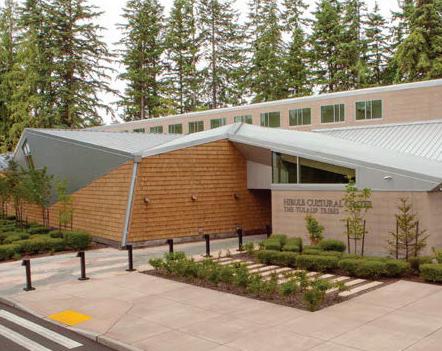









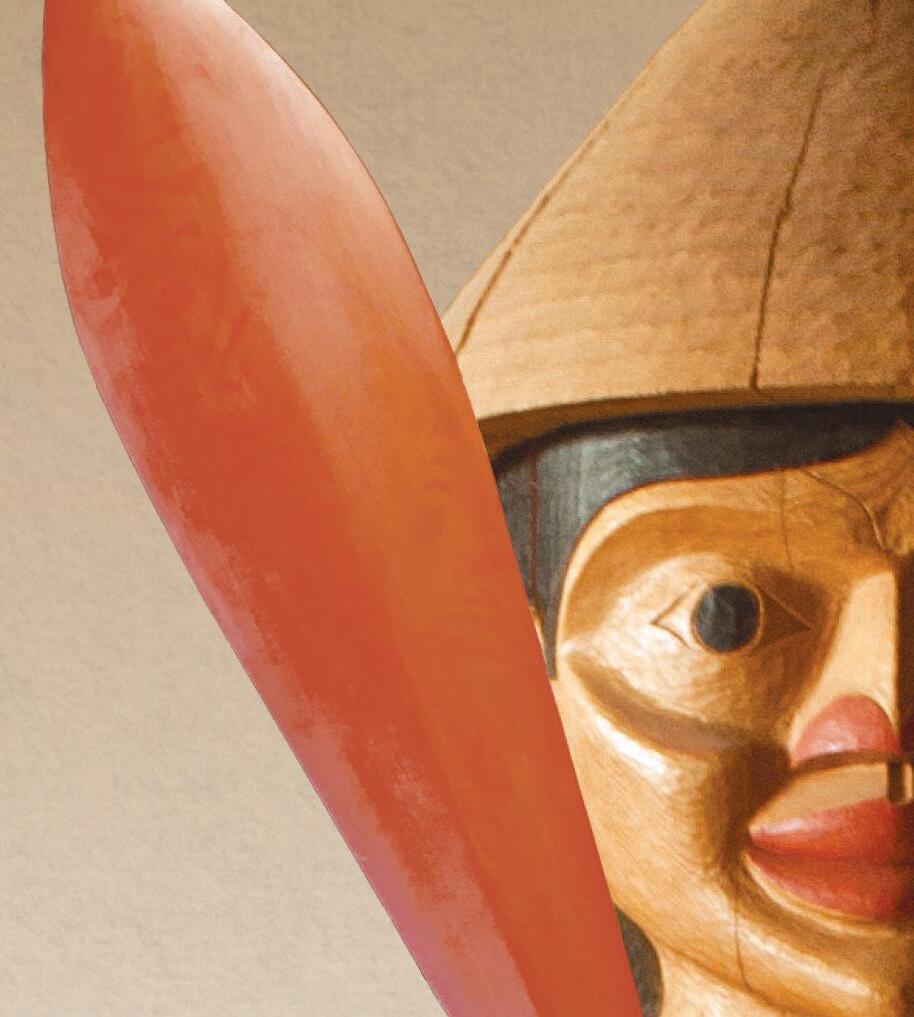


















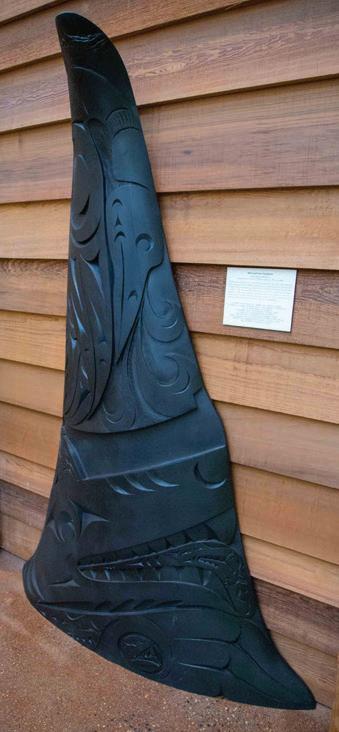




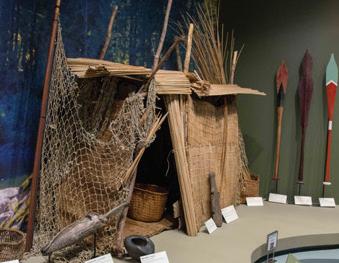




















Farms has been providing a unique and fun-filled environment where families and friends can enjoy a day of wholesome fun on the farm. It’s a place for entertaining kids of all ages with rides for young children and larger rides and activities, including our new video arcade that will thrill pre-teens and teens.



Swanky Scoop




All ages
13550 NE Village Square Drive, Unit 1030, Woodinville 98072 425-659-3534


info@swankyscoop.com

swankyscoop.com/custom-cakes
Celebrate with awesome artisan ice cream cakes from Swanky Scoop. Our cakes are custom-made in our shop with our indulgent and creative flavors. Always allergy-aware, we also offer vegan and gluten-free cakes that are uncompromisingly delicious. Contact us to add a scoop of awesomeness to your birthday celebration.
Sweet Art Cotton Candy






All ages
206-222-3432

sweetartcottoncandy@gmail.com www.sweetartcottoncandy.com
At Sweet Art Cotton Candy, we deliver unique cotton candy spinning services. We’re putting a whimsical, contemporary spin on the classic confection of cotton candy, using finer quality and less sugar. We’ve got a range of designs and flavors for you to choose from, including everything from classic flavor fusions to unique shapes and characters. We love making ordinary into extraordinary.













